|
4/8/2024 The Page that was MissedResearch for our latest blog post involved searching the 1855 Massachusetts census for all Acton residents who were born in Ireland. Using one of the available online indices, a list could be generated quickly, and then linked images of the census forms allowed us to check each individual’s details and make sure that we had not missed anyone in town born in Ireland. Aside from some creative name-spelling and questions about ages, we thought we had a complete list of Acton’s 1855 Irish-born population. We should have known that the process was too simple.
A few years ago, the Society received a donation of a book containing a handwritten “Census of Acton taken June 1st 1855 by Samuel Hosmer, Agent for Selectmen & Assessors.” This 1855 census listing was entirely handwritten, not a set of filled-in census forms. Because we have easy online access to census images through genealogical websites, it had never seemed important to study our census book in detail. While working on the Irish data, however, we took a look at what was actually in the book. To our surprise, on the first page, in the first household, there was a young Irish woman who was not included in our list of Irish-born residents. Thinking that it was perhaps an indexing problem with the spelling of an Irish name, we tried searching the online 1855 census database for the Massachusetts-born individuals in the same household. They were also missing. Moving down the handwritten page, we found that none of the people listed by Samuel Hosmer in the first 6 Acton households, plus part of the seventh, was included in the online index. Three commonly-used online databases gave us the same result; none of them included people from the first 6+ households in our handwritten 1855 census book. The first person who appeared both on our book’s first page and in Ancestry’s 1855 census database was Emma Francis [sic] Estabrooks, age 1 year, 11 months. The online image of the census form showed that Emma was listed on the first line of a filled-in, preprinted Acton census form. There should have been a previous form that listed her parents, but when we tried to access the previous page, we found that there was no image other than the cover of a bound volume Census of Massachusetts 1855, Vol. 19, Middlesex Co., Acton to Cambridge. We had the same result using FamilySearch and another online database; presumably, they all used the same source. (Though stated sources and dates vary somewhat across the different databases, they seem to have come originally from microform/microfilm of the census held at the Massachusetts State Archives.) It appears either that the original filming missed the form that contained the first 6.5 households in Acton’s enumeration or that the first form was actually lost. Either way, the indices and digital images of Acton’s 1855 census that are being used regularly for research are missing 36 Acton residents. We offer here the missing page 1 of Acton’s 1855 census for everyone who is searching for the following 36 individuals. Some were life-long Acton residents, but others only seem to appear in Acton’s census records here. All listed individuals were born in Massachusetts, except as noted. Seven of the missed individuals were born in Ireland. (We included them in our blog post on Irish in 1850s Acton.) Samuel Hosmer’s 1855 Census of Acton: Dwelling & Household 1
Note that the name Weatherbee was more often spelled Wetherbee in Acton. The name Esterbrook(s)/Estabrook(s) is differently spelled even within the same family here and appears in different forms in various Acton records. Further research did not help us to confirm the Irish name Colorne and what other forms it might have taken. Records for other individuals in the 1850s yielded other possible names such as Coborne and Coline. 3/17/2024 Irish in 1850s Acton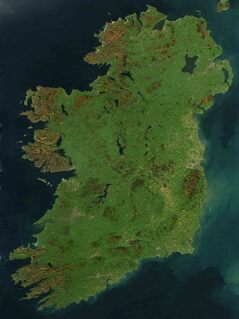 Source: NASA Earth Observatory Source: NASA Earth Observatory In honor of St. Patrick’s Day, we explored Irish immigration into Acton. The most useful starting point was the 1850 federal and 1855 Massachusetts censuses. Earlier censuses only listed the name of the head of households, usually male. The 1850s listings give us the name of every person in town, as well as their (sometimes approximate) age and birthplace. The population during the 1850s reflects changes in Acton caused both by Irish Famine immigration and the arrival of the railroad. The 1850 census of Acton listed 107 people born in Ireland, or 6.7% of the total population of 1,605. Twenty-five of the Irish-born individuals in Acton were female. (A clear error in the household of Ebenezer Davis Jr. was corrected in our statistics; research showed that the birthplace of Ellen Grimes and Charles Robbins was switched.). The 1850 Acton census gave no occupation for any female, so we can only guess what they were doing. Some women were living with a male who was probably the husband, sometimes with children. In other cases, females lived in a household of a seemingly unrelated family. They probably were doing domestic work. Of the 82 males born in Ireland, almost all who were of working age were laborers (71). Thirty-one were living on a farm and probably working there. Not one of the Irish laborers was listed as a farmer, a term that in the 1850 census apparently was reserved for those whose farm produced more than $100 of products. However, three of the Irish-born men owned real estate that included improved land and buildings. The town’s tax valuation for 1850 shows that John Grimes had 2 acres of improved land, Francis Kinsley had 1.5 acres, and Thomas Kinsley (listed in the 1850 census as Thomas “Wamsley”) had 3 acres. None showed up on the agricultural census for that year. Only three Irish-born men had occupations other than laborer. Twenty-six-year old Nathan Smith was working as a blacksmith for Jonas Blodget. Michael Phaelan was working as a “Switchman” for the railroad, an employer that provided opportunities to many Irish in the nineteenth century. It is very likely that some (or many) of the men listed as laborers worked for the railroad. Finally, Jerry McCarthy was listed as a Boarding House Keeper. Along with (presumably wife) Catherine and two children, he provided a home to eleven Irish laborers. In the 1855 Acton census, there were 111 Irish-born individuals out of a total population of 1,680. The Irish population percentage had not changed much, but the gender mix did. Forty-four were female (39.6% of the Irish-born population, up from 23.3% in 1850). Again, females’ occupations were not noted. Of the 67 Irish men of working age, 27 were listed as “farmer,” a term that seems to have been used in 1855 for anyone working on a farm. (Land ownership was not specified in this state census, although it can be discovered from other sources.) Two Irish-born men were listed simply as “laborer.” The 1855 census specified that 27 men were working on the railroad, almost all as “repairer,” although Michael Phelan was working as a “Switch Tender.” There were eight Irish-born men who had other occupations. Daniel McCarthy was working as a tailor. John Caully (name has possible interpretations such as Canly or Carelly) and Morris Sexton were apparently working at the flannel print works as a “flannel printer” and a ”dyer,” respectively. Michael Falan and Martin Fay were Wood Sawyers, and Thomas Kinsley was a Stone Layer. One has to wonder how the early Irish immigrants were received in Acton. Comparing the 1850 and the 1855 census lists, we found that many people from the earlier list had moved on by 1855. Given significant variations in ages and sometimes in names, it is impossible to match the two lists precisely, but the maximum number that we conjecture might possibly have been on both lists is 23 people. Whether that reflected the climate of the town or simply other opportunities elsewhere, we cannot tell. There may have been a variety of responses to the new arrivals. We do not have a local newspaper available until later, so surviving newspaper reports that were repeated in other places were likely to feature the worst. One such story that circulated in September 1849 accused Acton’s selectmen of shockingly uncharitable treatment of a family of Irish immigrants in crisis. After the story appeared in Boston papers and was picked up in others, Boston’s Daily Evening Transcript reported on an inquiry into the matter and clarified that the tragedy had actually happened in a different town and had not involved Acton’s selectmen at all. (The downside of our having access to digitized old newspapers is that we also have access to old rumors and reporting errors.) Whatever the welcome they received, Acton’s Irish residents proceeded with their lives after the huge upheaval of immigrating. Between 1848 and 1855, 37 children were born in Acton to Irish-born parents. Some Irish-born Acton residents had enough to show up in an 1855 Acton agricultural valuation:
Sources:
1850 Federal Census of Acton (online) 1855 Massachusetts Census of Acton (online) Census of Acton taken June 1st 1855 by Samuel Hosmer, Agent for Selectmen & Assessors (handwritten) Vital Records of Acton, MA Newspaper articles not actually describing an Acton event: Boston Courier, Sept. 13, 1849, p. 4 Boston Evening Transcript, Sept. 13, 1849, p. 1 The (Springfield) Daily Republican, Sept. 13, 1849, p 2 Boston Daily Evening Transcript, Sept. 20, 1849, p. 2 Salem Gazette, Sept. 21, 1821, p. 2 (quoting Boston Atlas) The (Gettysburg, PA) Star and Banner, Sept. 28, 1849, p. 5 Picture of Ireland courtesy of NASA Earth Observatory, image 49687 1/16/2024 One Crowded ClassroomAs mentioned in a recent blog post on the history of the East Acton school district, during the first decades of the nineteenth century, a one-room schoolhouse at the corner of today’s Great and Davis Roads served students from both North and East Acton. The result, especially in the winter months when farm work was not expected of older students, would have been crowding and a teacher with very little time for individual grades, much less individual students’ needs. Residents of East Acton campaigned for years to split the school. We recently came across a March 6, 1828 listing of all the students in what was then called the “East” School District. On it were the names and ages of 87 students, 48 “Masters” and 39 “Misses.” At a time when censuses listed only heads of household, this is a particularly useful document. In some cases, this is the only record we have found that shows a student’s presence in Acton. Given the age provided in the March 1828 list, some of the students were easy to find in the town’s published birth records. Some, because of a common name or an age that does not quite match dates in the records, were not so clear and needed to be followed up in other records. Baptisms were sometimes done well after birth, so the provided age was less helpful in identifying individuals in those records. In some cases, we could not find the students in any other Acton records, so we had to search farther afield and try to work back to an Acton connection.
Below is an annotated list of the 87 scholars in the March 1828 East Acton School with the results of our research into their identity. Overall, we found 42 whose name and age seem to match a person in Acton’s birth records and another seven whose age was somewhat off but who probably matched an Acton birth record. For 14 students, we found no birth record in Acton or elsewhere, but we did find a church/baptismal record in Acton that is probably the right person. (Some were baptisms done several years after birth, and some of those were born elsewhere). Research revealed five students whose later records reported an Acton birth, but there is no record of it at the time. We were able to find parents and a likely out-of-town birthplace for eight of the other students. The remaining eleven remain elusive. Ella Miller’s five-year diaries at our Society give us an idea of what life was like for a career Acton schoolteacher at the beginning of the twentieth century. An issue that Ella mentioned often was the complications she faced in getting to and from work. As mentioned in our previous blog post, Ella’s earliest teaching job would have presented few commuting problems. After graduation from Framingham Normal School in the spring of 1896, she started teaching that fall in the same schoolhouse that she had attended in North Acton around the corner from her home. Ella’s time teaching in North Acton was the end of an era. One-room schoolhouses were being consolidated into larger schools. In the fall of 1899, Ella and the students from North Acton were sent to the “Centre” school on Meetinghouse Hill, following the East Acton school that had been closed in 1897. Southeastern Acton students were sent to the South Acton school the year before that. The idea behind the consolidations was that they would improve students’ educational experience by reducing the number of grades a teacher needed to handle. Ella became teacher of the Center school’s intermediate students, with grades 4-6 in her classroom. The move to the Center School, while it may have reduced Ella’s in-classroom complications, added complexity to her travels to and from her North Acton home. The distance was a little less than two miles, by today’s standards a miraculously short commute. In Ella’s day, those miles could be a challenge. Though she lived near train tracks, the trains, even if they came through at the right time, did not go to Acton center. Ella, who would at the diaries’ beginning have been dressed in a long skirt and wearing a corset, found various ways to get to her job. There were days in all seasons when she would walk, either because of nice weather or lack of other options. On some days, she bicycled, and on others, her father gave her a ride in a horse-drawn vehicle. Without weather forecasts, there would have been plenty of room for error. On some days, she optimistically took her “wheel” to school, only to be faced with rain in the afternoon. Even if her father hitched up a horse and took her to work, there were factors to consider. Was there mud, ice, or snow to deal with? Occasionally Ella would mention that the conditions were “so slippery and horse smooth” that the going was extremely difficult; the horse’s shoes had to match road conditions. There was also an important decision to make about whether to take a wheeled vehicle or use “runners” for going over snow. Once choices were made, occasional mishaps were inevitable. In Jan. 1909, she reported that she had gone to school in the sleigh, but the going was rough. On one memorable day in Feb. 1911, a man who sometimes worked on the Miller farm took Ella in the sleigh. En route, “a runner broke & lowered my side to the ground. Came back and went in the wagon.” The following day, the sleigh went to the blacksmith’s shop. The Millers put their “democrat” wagon on runners, and after that it was “fine sleighing.” As snow receded, road conditions were variable and a real challenge. She walked home on Feb. 26 and 27, 1914 and said “Rather hard walking because snow is getting soft & makes it slumpy.” Then came mud season. On March 8, 1912, Ella wrote “Getting muddy but snow lingers in patches, slippery in shady places on the road.” On March 31, 1918, she wrote “A bad mud spot for autos just north of the house. Pa had to help Mr. Park of Chelmsford out with the horse & warned others.” The following March, Ella noted that there was “an auto stuck in the mud for 2 hours out here toward dusk.” Sometimes, other people made the roads even worse. In December 1914, Ella noted that “The trucks carrying Halls’ logs are making bad work of the roads, especially down beyond Hollowells”. When, finally, the roads dried up, Ella could ride her bicycle to school. Ella would note in her diary when she took her first spring ride. Not surprisingly, she would occasionally have issues with her bicycle. The second day of school in September 1908, her pedal came off, and there were inevitable problems with wheels and tires. Her neighbor Elmer Cheney often helped her with repairs, putting in a new valve or adding “Neverleak” to a tire. Sometimes if it rained after school, she would ride home anyway. She was a hardy person, but even she mentioned at the end of October 1914 that she’d gotten chilled coming home on her bicycle. (There was a little snow that morning, and it reached 33 degrees at night). She must have been particularly determined (or desperate) on Dec. 2, 1918 when she rode her bicycle at 16 degrees. The one option that Ella had for public transportation was to take the “barge” that the town provided for students from outlying areas to get to school. The barge was horse-drawn and provided (some) protection from the weather. Ella seems to have made a practice of taking the barge only when it was particularly needed. She mentioned conditions that induced her to take the barge; muddy roads, rain, thunder and high wind, sub-zero temperatures, a major snowstorm, and her family horse being lame. On May 11, 1917 she wrote that she “came home in barge every night, partly because of ironing, cooking, weather & Aunt Eliza being here.” Riding the barge was not a perfect commuting solution. The barge drivers had the same issues with deciding between wheels and runners as did the Millers. Some days were tough going. Children’s absences were often blamed on late barges, but Ella couldn’t afford to be late. On March 6, 1923, Ella reported that the “East Acton school barge tipped over yesterday morning on the way to school and several children had slight bruises.” There were also occasional behavioral incidents during the trips. On Feb. 8, 1912, Superintendent Hill came to school at Ella’s request to talk with a student “about his immoral language in the barge.” On December 15, 1921, Ella reported “Trouble in the North Acton barge going home last night – Boys pounding Kathleen so she didn’t come to school.” That incident led to another superintendent’s visit. By the 1910s, some people in Ella’s acquaintance had bought automobiles. Superintendents in early days covered multiple towns. In 1910, superintendent Frank Hill supervised Acton, Littleton and Westford. The 1911 reorganization of the district to include Carlisle seems to have become too much, and Mr. Hill started making his trek by auto. In April 1915, Ella’s co-teacher and friend Martha Smith got an automobile. In the later 1910s, Ella would sometimes get rides get rides from Miss Smith and others. Over the years of Ella’s diaries, it is interesting to note that while some, like the Smiths, started traveling by auto, the horse remained the means of transportation for many. As late as January 1926, Ella noted that it was icy for autos that morning, so “Pa got horse sharpened.” Even though cars would have solved many commuting problems, they added their own as well. In 1917, Ella mentioned that “Miss Smith wrenched her back cranking auto last night. Feeling mean but came to school.” (Mean was Ella’s term for sick or sore.) On two other occasions, Ella mentioned men breaking an arm while cranking their automobiles. Other teachers had their own commuting issues. Those who were living in other towns might rely on trains. Ella noted in Dec. 1917 that Miss Barrett had not gotten to school until 9 o’clock because her train was late and she missed the barge at East Acton. Ella’s father picked her up with horse power. Miss Durkee, an hour late in March 1920, had resorted to snowshoes to get to school. Whatever the mode of transportation, the condition of the roads mattered. Ella occasionally mentioned men working on the road, macadamizing (putting down gravel) or tarring. Snow clearing was a perpetual problem. In Feb. 1920, a storm dropped so much snow that men including Ella’s father shoveled the road by hand to make it wide enough for an auto. Later that week, Ella mentioned her father shoveling the North Acton driveway where drifts were four feet deep. A particularly memorable road issue was caused by the Freeman family in 1914. On Sept. 6, Ella reported that Mr. Freeman had bought a little house and was going to move it onto Ruth Robbins’ North Acton land. At various times in October, Ella would mention which part of the road was affected that day. On Oct. 8, Ella mentioned that it was right across the road that evening. A week later, it was half way to the brook. On the 19th, “Freeman’s house is at the brook, so we go by through the brook.” The next day, “Freeman’s house was almost at the corner so we could go around the triangle.” On Sunday the 25th, “The autos have been very thick by here today & yesterday afternoon because Freeman’s house still blocks the state road.” Presumably the house reached its destination soon thereafter, because the traffic reports stopped. 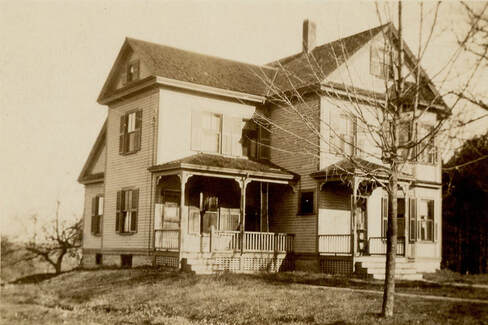 Miller Home, 32 Concord Road Miller Home, 32 Concord Road A New Commute, Twice In 1919, Ella’s mother passed away. It was time for a change. Ella bought a house just outside the center at 32 Concord Road. For a while, the family went “down home” to the farm periodically. There was a time when the property was rented, but eventually a buyer was found. The move to Concord Road would have made Ella’s commuting to the Center School considerably easier. Snowy days were still a problem, of course. In January 1923, Ella tried skiing and liked it enough to buy skis of her own. She used them occasionally to get to work on days such as Jan. 15, 1923 when it was snowing hard and the barges had difficulty getting through. She learned later that winter that skis might not be so useful for getting home if the snow had softened up. The horse-drawn school barges were replaced by school busses in the fall of 1923. In the winter of 1924 and 1925, Ella mentioned that the busses had trouble getting through snow-filled roads and brought the children over an hour late. In Jan. 1925, a bus got stuck on “Pope’s Road” and didn’t deliver the last children home until 6:30 pm. Ella never mentioned missing the old sleighs in the winter, but it might have occurred to her. Ironically, after moving closer to her work, Ella’s commute became longer again in 1926. After years of contention (see blog post), Acton finally had managed to agree to build a high school that opened up at Kelley’s corner on January 11, 1926. On March 1, 1926, the 7th grade went to that building with Ella as their teacher. Ella’s father borrowed the Smiths’ horse and took her to school that day. On the 10th and the 15th, Ella mentioned that the roads were slippery for the horse to cope with. On the 18th, a neighbor gave Pa some “never-slip” shoes for the horse that were put on by the blacksmith. Ella’s sister Loraine gave her a ride to and from work on the 16th, and that may have convinced Ella to buy her own car on the 20th, a Ford coupe (known to us as a Model T). Driving lessons followed from friends and her sister. Ella mentioned learning to back up and turn around in the field below the cemetery and practicing turning around “up on edge of Boxboro, at Mr. Tenney’s, Miss Conant’s, Taylor’s store & schoolyard.” Her father continued taking her by horsepower, but as the new school year began, on Sept. 7, 1926, Ella wrote that she began going back and forth in her own car. The freedom must have been welcome, although later entries showed that Ella started having familiar-sounding problems. As cold weather arrived, her car wouldn’t start. She got chains for her tires and needed repeated charges for her battery. Water, alcohol and glycerin were put into the radiator and taken out again. On one ride, she noticed her steering wheel wobbling badly. At other times, her foot pedals needed adjusting, and there were issues with her generator. At the beginning of the next school year she reported, “Had a new experience with the car – couldn’t start it without pushing because something locked.” That was soon followed by “Had the brakes + lights on my car tested by Harold Coughlin. One headlight was not working – a surprise to me.” In October, after a teachers’ meeting, Ella had to ask the superintendent to crank her car, not an ideal work situation. We are missing Ella’s 1928-1932 diary, so we don’t know many of the details from those years. Driving must not have been a perfect solution for Ella. We learned from the Superintendent’s annual report that Ella moved back to the Center school, “nearer her home” in the fall of 1931. A relative newcomer, the superintendent reported that “at Acton Centre all teachers are new to the building,” which must have amused Ella after her many years there. She became principal of the Center school, and Marion Towne took over the seventh grade in the high school building. By the time Ella was writing in her final diary, 1933-1935, she made a practice of not registering her car until April. She would find other ways to get to school in the winter months. (She did mention that the weather would have allowed her to take the car to school every day in January 1933 if it had been registered.) By March 1933, signs of her failing health were beginning to show. Ella, who had amazing energy in her younger days, mentioned that she was getting winded walking to and from school. Mr. Fobes started transporting her, for which she was grateful. Ella continued to drive in better weather. Two of Ella’s final diary entries related to her car. On May 16, 1935, she got an oil change and the next day she wrote “All in tonight. Managed to take car to W. Acton by appointment & left to be tested and brakes relined & for them to bring home.” Sadly, that seems to have been her last excursion. By then, her heart was apparently giving out. Her diary entries stopped on May 25, and, as her sister Loraine noted in the diary later, “Ella’s work ended” on June 4. The Centre Grammar School was closed during part of the next day so that her pupils could attend her funeral. At age 57, she had been the oldest and the longest-serving teacher in Acton. 1/20/2023 Ella Lizzie Miller, Acton DiaristAs mentioned in our previous blog post, diaries can be a wonderful source of information about Acton in former days. At the Society’s Jenks Library, we are lucky to have a set of five-year diaries starting in 1908 kept by Ella Lizzie Miller, an Acton native who spent her nearly 39-year career teaching in Acton’s schools. Miller descendants have been very generous over the years, supplying our Society not only with Ella’s diaries, but with pictures, postcards, letters, memoirs, autograph books, and other items from the Miller family’s years in town. Before delving into the diaries, it seemed worthwhile to do some background research on Ella’s early life and her family. Ella Lizzie Miller was the eldest child of Charles Isaac Miller and Lucy Elizabeth Keyes. Charles was born on Aug. 24, 1850 in Sudbury, Vermont. His father Samuel Cooley Miller died in 1852 of sepsis from a cut on his finger. The 1860 census shows Charles living with his mother, his Miller grandmother, and two siblings in Sudbury, VT. In April 1871, Charles was (supposedly temporarily) working as a brakeman for the Northern Railroad, coupling railroad cars of a freight train at Canaan, NH. His right arm got caught, and his arm had to be amputated above the elbow. Newspapers reported details of the accident but also that employees of the railroad presented him with a gift of $91.50. Charles came to North Acton in 1873, around the time that the Nashua & Acton Railroad connected to the very sparsely-populated North Acton, branching off from the Framingham and Lowell that had arrived in 1871. Charles became the North Acton depot master, also serving as telegraph operator, switchman, and signal tender. According to Phalen’s history of Acton he “was so adept at handling freight and express with (his) attached hook that he was ever a marvel to the youngsters of the town.” (page 216) In January 1876, Charles bought from Daniel Harris ten acres between the Framingham and Lowell Railroad and the main road. That July, he bought an additional thirteen acres that went from the “Road to Lowell” (approximately #737 on today’s Main Street) to the “Mill Brook” (Nashoba Brook). The Framingham and Lowell Railroad ran through the land. The thirteen acres had once belonged to Aaron Woods and had been sold at auction the year before. (Aaron Woods' unsought fame was the subject of a previous blog post.) Ella Miller’s mother was Lucy Elizabeth (“Lizzie”) Keyes, born March 22, 1856 in Westford, MA. Her father Edward Keyes had died in South Carolina in August 1865, having served in the Union army for four years. For a while, Lizzie and her mother Lucy Ann (Robinson) lived in Groton with Lizzie’s grandmother. On May 23, 1872, Lizzie’s mother married Acton’s Isaac Train Flagg. Lizzie’s half-sister Edith Flagg was born March 11, 1875, and though Edith became Ella’s aunt, she really was her contemporary. According to family records, Charles Miller married Lucy “Lizzie” Keyes on Thanksgiving Day, Nov. 30, 1876 in North Acton. Four children followed: Ella Lizzie born Sept. 26, 1877, Alice Emma born March 10, 1879, Samuel Elmore born Nov. 25, 1881, and Loraine Esther born Nov. 6, 1884. Ella and her siblings grew up on the farm with the railroad running through their land behind the house, the depot just below, and the North Acton schoolhouse around the corner. The road in front led from Acton Center to Lowell. If Ella kept diaries as a young woman, unfortunately they did not find their way to our Society. We have had to use other sources to put together her early life. She attended the white schoolhouse on what is now Harris Street. A picture from between 1888 and 1890 shows her and Blanche Varney as the oldest of the students taught in the building by Miss Jessie Jones. The Concord Enterprise gives us glimpses of Ella’s later academic career. In 1890, she was one of 22 students (only 2 from North Acton) who were admitted to the relatively new High School program. She became the managing (and inaugural) editor of the school literary magazine "The Actonian." Ella was one of five students who graduated in June 1894. At the ceremony, she was selected to give an address entitled “Oars and Sails.” Town reports show that Ella L. Miller, while a member of the high school’s senior class, served as an assistant teacher in the South Primary School in Spring 1894. The School Committee’s annual report noted that “during the spring we were obliged, by the large number of pupils in attendance, to employ an assistant teacher and this assistant was compelled to take her classes into a corner of the schoolroom or to the cloak room, or the hallway, as the weather permitted.” (page 56) The hallways presumably would not have been heated. It was certainly an introduction to teaching with constrained resources. Ella and fellow graduate Blanche Varney passed the entrance examination for Framingham Normal School, a teachers’ training college. This was particularly important because as late as the 1897-1898 school year, the Superintendent’s report noted that Acton’s high school was not approved by the State Board of Education. The 1890s were a time when the state and the towns were struggling with what constituted a legitimate high school, with issues such as the minimum number of teachers, years of study, and curriculum. Ella’s autograph book, in possession of the Society, shows that she was originally a member of the Class of 1893, but in 1893, the high school course was changed to four years, and apparently Ella was one of the few who continued on. Ella graduated from Framingham Normal School in 1896. Ella was paid for teaching the North Acton school in the fall and winter of the 1896-1897 school year, taking over after the resignation of Lillian Richardson. Ella taught there for the next two years at a salary of $10 per week. In the Fall of 1899, the North Acton school was merged into the Center school, and Ella started teaching in the new “intermediate” division there (grades 4-6). Probably as a result of her change of school, a typo in the 1900 report said that Ella was “appointed,” starting her service in Acton schools, in 1899. The error was repeated in town reports for decades. On March 17, 1897 (according to Ella’s later diaries), the family moved to Hudson where Charles bought farmland at about 181 Central Street. Charles still owned the North Acton farm, but he was trying to sell it. An ad attached to the back of a photograph owned by the Society reads: “FOR SALE - Thirteen-acre farm: fine vegetable garden: nice lot of sweet corn: asparagus and strawberry beds: good shade trees: excellent drinking water: house six rooms: barn: two henhouses: near railroad station and post office: half mile off State road from Boston to Ayer: two miles to center of town. Desirable for summer home or good location for poultry or small fruit farm. Price $3500. C. I. MILLER, North Acton." Someone wrote on the back of the picture that Charles did not find a buyer. He may have found someone else work the land in the meantime, however. Ella was teaching in North Acton, so we don’t know how she managed logistics. She might have stayed in the house or boarded with a family. Commuting that distance would not have been easy in those days, whether by horse or train. An Acton Center newspaper item in April 1903 mentioned that “Miss Loraine Miller of Hudson spent Monday with her sister, Miss Ella Miller,” giving the impression that Ella was staying in town at least some of the time. Ella’s brother Sam started working for the Boston & Maine Railroad as a telegraph operator and ticket taker in 1899 and moved to Beverly. Ella’s sister Alice married Hudson neighbor Halden L. Coolidge in May 1904 and settled down at 205 Central Street, Hudson. Neither Sam nor Alice lived in Acton after that. We do not know what precipitated Charles’ move to Hudson. His mother, who had remarried and spent many years in Wisconsin, came back to Vermont and passed away in 1895. We had hypothesized that she left him some money. However, Charles entered into various mortgage transactions in the 1900-1904 period, so he may have been feeling financially stretched. The mortgages were paid off. In October 1904, Charles transferred the thirteen-acre North Acton farm to Ella for the price of one dollar. In 1905, a buyer for the Hudson farm materialized, so Ella’s family returned to their North Acton farm late in the year. Ella taught in Acton for eleven years before our diaries begin. Unfortunately, we only have brief snippets from newspapers to show what she was doing aside from teaching during that time. The Enterprise mentioned that Ella taught a Young People’s Society of Christian Endeavor class in early 1896. In January, 1902, she hosted the Shakespeare Club. In August 1907, Ella, Martha Smith, and Sarah and Helen Wood took a vacation at York Beach, Maine (Aug. 14, 1907, p.8) Ella’s parents became involved in the Grange in Hudson. When they were moving back to Acton in late 1905, about one hundred Grange members and neighbors showed up at a sendoff at Alice’s house. Ella and her parents became involved in the formation of the Acton Grange in March 1906. In 1907, Charles and Ella were both elected to Grange positions and Ella’s mother Lizzie was sent to the state Grange meeting as Acton’s delegate. The Grange would continue to be an important part of their lives in later years. Ella’s diaries begin on January 1, 1908. Over the next few months, we plan to use them to learn more about her life and also about what Acton was like in the early years of the twentieth century. The Miller Siblings: Some references used:
11/19/2021 Newport Under the RaftersRecently, two very large and brittle architectural drawings arrived at Jenks Library. They had been given to our donor decades ago by a West Acton home owner who had found the drawings in the eaves of an outbuilding. Her property had formerly belonged to West Acton builder John S. Hoar, so it was reasonable to assume that the drawings were remnants of one of his projects, hidden away and forgotten for years. When the owner unrolled the paper, it cracked, but what emerged did not look like any Acton property. She taped the torn plans and gave them to a person well-known for his interest in Acton history. He has now shared them with the Society. The plans were undated, unsigned, and gave no indication of whom they were created for. One, a drawing of the exterior of the house, matched none in Acton, and the other’s first-floor details indicated that the owner’s wealth far exceeded that of any of Acton’s early residents. The plan included a hall measuring 54’x 30’, a drawing room (34’ x 19’), morning room (almost 28’ x 12’), library (27’ x ~19’), dining room (31’ x 19’), billiard room (24’ x 19’), kitchen (~25’ x 18’), servants’ hall (20’ x 16’), butler’s pantry, cook’s pantry, housekeeper’s parlor, scullery, “Man’s Room,” and a gun & fishing rod room. Perhaps John S. Hoar had a very wealthy client somewhere, but there was no clue where the house was. Sometime later, our donor was visiting the Breakers in Newport, RI and was inside the Children’s Playhouse on the property. Framed on the wall, he saw a reproduction of a first-floor plan that looked astoundingly like the plan found in West Acton. It came from the first Breakers, built for Pierre Lorillard in 1878 and purchased by Cornelius Vanderbilt in 1885. The building had been designed by prominent Boston architects Peabody & Stearns. The first Breakers burned in November 1892 and the enormous villa designed by Richard Morris Hunt replaced it. All that is left of Peabody & Stearns’ work on the property is the 1886 “Toy house” built by Cornelius Vanderbilt “for the pleasure of his children” soon after they moved in. (Newport Mercury, July 3, 1886, p. 1) Looking at the drawings at Jenks Library, we had a mystery on our hands. Was it truly the first Breakers? If so, what were the plans doing in West Acton? Were these perhaps an architect’s rejects or extra copies for the builder? Was there a connection between the Hoar family and the builder/architects of the original mansion? Had someone given the plans to John S. Hoar simply because he was a builder who would be interested in them? Did he use them as inspiration for his own work? Not confident that we would be able to answer all of those questions, we started with identifying the house. Photos of the first Breakers are available online; despite slight differences, the house pictured looks to be the same as in the drawing. We wanted to compare our first-floor plan to the one used to build the Lorillard Breakers. The book Peabody and Stearns: Country Houses and Seaside Cottages by Annie Robinson has photographs of the house and a reproduction of the first-floor plan which was also featured in The American Architect and Building News, Volume 4, No. 132, July 6, 1878, in an illustrative spread between pages 4 and 5. Our first-floor plan has more details about doors, windows, fireplaces, built-ins, materials, and patterns than the first-floor plan shown on the left, but there is little doubt that the architectural drawings brought into Jenks Library were for the same house. The plans must have been for the original building, because immediately after Cornelius Vanderbilt bought the property, he started renovations. McNeil Brothers, builders from Boston, pulled out mantels and paneling, moved the kitchen away from the main house, and created a new 40’ x 70’ dining room in between, quite different from the original plan. (Newport Mercury, Dec. 4, 1886, p. 1) Our Plan's First-Floor Details. Clockwise from Top Left:
An Unknown Route to the Attic Our next challenge was to try to discover why plans for the long-gone Breakers were found on Windsor Avenue in West Acton in the 1970s. The West Acton building in which the plans were found had belonged to John S. Hoar, son of John Sherman Hoar, Civil War veteran, carpenter, and founder of the New England Vise Company mentioned in previous blog posts. (See original blog post and follow-up.) He came from the Littleton branch of the enormous Hoar family descended from a settler of Concord, MA around 1660. If there was a connection with Newport, it was not because they were a Rhode Island family. Obviously, John S. Hoar did not design the Breakers. Our next hypothesis about the plans was that perhaps he or a relative was involved in building the structure, but our route to proving or disproving that theory was not simple. Though John S. Hoar and his father were involved in building, the father died in 1872 and John S. was only turning 18 in 1878 when the house was being constructed. If he worked in Newport at that time, we have no record of it. Our follow-up theory was that perhaps after the original Breakers was renovated or burned, our drawings, having been superseded, were discarded. After Cornelius Vanderbilt bought the property, the “old” was not of much interest; the Newport Mercury reported that two of the “elegantly carved mantels” were auctioned off for about $100, even then considered much less than they were worth. (Dec. 4, 1886, p. 1) Perhaps someone found the plans, saved them for their historical value, and gave them to John S. Hoar. But who? The West Acton Hoar Family and the Whitney Relatives Our donor believed that other members of John S. Hoar’s family were involved in construction, so we researched uncles and brothers for a connection in Newport. A great deal of searching later, we had only found one promising clue. On Jan. 1, 1892, the Concord Enterprise reported, “Crosby Hoar spent Christmas with his mother. Crosby is superintending the building of some Newport, R. I. residences.” (p. 8) This Crosby Hoar was John S. Hoar’s brother. We thought that we might be able to learn about what Newport residences Crosby worked on and whether he had a connection to the architects Peabody & Stearns, the builder(s) who worked for the Lorillards or Vanderbilts, or anyone else who might logically have had the plans. Following up on Crosby did not easily yield that information, but it was clear that we needed to know more about the extended Hoar family. What follows is a bit of what we learned about the family of John S. Hoar. As mentioned previously, their family roots go way back in the area. It was surprising, therefore, how complicated it was at first to learn about John’s brothers. We will start with their father, the carpenter, farmer, and vise inventor John Sherman Hoar. J. Sherman Hoar, as he preferred to be called, was born in Boxborough on June 19, 1829. J. Sherman’s father John grew up in Littleton, and his mother Betsey Barker grew up in Acton. J. Sherman married Lydia Parker Whitney in 1851 and lived for a few additional years in Boxborough. Around that time, his brother Forestus D. K. Hoar moved to Acton. By the 1860 census, J. Sherman Hoar was living in West Acton with his growing family. Tracking down the family proved challenging until we realized that a number of Sherman and Lydia’s children eventually changed their surnames to Whitney, and one son went by his middle name. As Whitneys appeared in various places, we had to make sure that they were actually originally from the Hoar family and not people of similar names. Trying to answer our questions turned into quite a project. J. Sherman Hoar’s children with Lydia P. Whitney included:
The year 1872 must have been a traumatic time for the family. In June, Sherman’s father John passed away. On October 13, 1872, Sherman died from typhoid fever, and a week later, eldest daughter Kate died from the same disease. The next few years must have brought about a great deal of upheaval. We do not have many details about that time period but have tried to fill in what we could. All of J. Sherman’s sons seem to have worked in construction. According to Lucie Hager’s 1891 Boxborough: A New England Town and Its People, “Three of the sons went West and engaged in business as builders and contractors, and another, John Hoar of West Acton, is an architect.” (p. 158) Following up on that clue, we discovered that the brothers actually headed for the Midwest. Our first round of research, complicated by name changes, showed that the youngest, Edwin Barker [Hoar] Whitney moved to St. Louis, Missouri and stayed there. Census records alternate between showing Edwin as a superintendent employed by a school system and a superintendent working in buildings/construction. He occasionally appears as “Edward.” We will leave that possible confusion for another researcher. Aside from his building connections, we found nothing to indicate that he might have obtained plans to the original Breakers. John S. Hoar’s younger brother Abner Crosby obviously had been involved in construction in Newport. The Newport Directory of 1882 shows a carpenter Crosby Hoar living in a boarding house. Once we realized that he later went by Crosby A. Whitney, we found him in Newport directories in the years 1890-1895, listed explicitly as a builder in the later years. Disappointingly, none of our searches enabled us to find out any more about his time in Newport, including the houses he worked on. By 1896, he had moved to Boston where in April of that year, he married Annie C. Daning. The record lists him as a carpenter. The Boston directory of 1897 shows Crosby A. Whitney as a “building supt. 166 Devonshire, rm. 42.” (More on this later.) Though building superintendent can have different meanings, based on what we have discovered, he would have been a construction supervisor. He apparently spent his career in construction. He was listed as some variation of building superintendent in the 1900-1930 censuses and in Boston directories. His wife Annie died in 1929, and the 1930 census incorrectly listed him as “Crosby A. Fletcher,” living with his sister Alice (Hoar) Fletcher and her husband in Belmont. We did not find online details of his death or burial, although an indexed death record lists a Crosby A. Hoar as having died in Westborough in 1934. Aside from the fact that he was in Newport and in construction, our original research into Crosby did not convince us of a definite connection to the first Newport Breakers. John S. Hoar’s older brother Arthur Cephas became a master builder. Like two of his brothers, he took Whitney as his last name; we found a record of his name change in Massachusetts on Feb. 7, 1881. We knew from Hager’s Boxborough history that he had headed to the Midwest by 1891. A Masonic membership record showed that Arthur C. Hoar Whitney had been associated with the Masons in St. Louis from 1891-1895 (and in Massachusetts before and after). He lived to the age of 97, and his Boston Globe obituary mentioned that he “had designed numerous buildings in Chicago, St. Louis and other Midwest cities” as well as the Groton School chapel. The obituary gave no indication of a Newport connection and was quite vague about his activities before he moved to Lexington (MA) in 1907. (Boston Daily Globe, Nov. 16, 1951, p. 8) Fortunately, we kept looking. Online searching showed that Arthur C. Whitney was in construction in Boston. A digitized 1897 catalogue for a Special Exhibition held by the Boston Architectural Club contained an ad for “C. Everett Clark & Co. Contractors and Builders, 166 Devonshire Street, Room 42, Boston., Mass.” The names at the bottom of the ad were C. Everett Clark and Arthur C. Whitney. We also found an ad in the 1908 Year Book of the Boston Architectural Club showing Arthur C. Whitney, Contractor and Builder, working at 18 Post Office Square in Boston, Room 4. From those two pieces of information, we assumed that Arthur worked with another builder for a short time and then went off on his own. We would have saved time if we had paid more attention to the identity of the partner. However, our research into Arthur C. Whitney’s later life showed that he had a successful career as a builder. By 1899, he was in Milwaukee representing the Boston Master Builders’ Association. (Concord Enterprise, Feb. 2, 1899, p. 8) A 1906 writeup of Arthur C. Whitney in Commercial and Financial New England Illustrated showed that he had worked on numerous big projects in Boston, employed a large number of workers, and “aided materially in carrying out the ideas of some of the most prominent architects in the country.” (p. 264) We did discover that he worked with Peabody & Stearns. Our hypothesis was that someone who worked at Peabody & Stearns or perhaps a Newport builder had discarded our plans and somehow they found their way to Arthur or Crosby Whitney, who then gave them to brother John S. Hoar. The connections still seemed quite tenuous, however. We investigated John S. Hoar last, because we were under the impression that he had stayed in or near West Acton his entire life. When we searched for him in the 1880 census, however, we were surprised to discover that Arthur C. Hoar (age 25) and John S. Hoar (age 20), both carpenters from Massachusetts, were living in a St. Louis, Missouri boarding house. Listed after the brothers was another boarder, a 42-year-old builder from Massachusetts named Charles E. Clark. Following a guess that the Hoar brothers were in St. Louis working for this builder, we belatedly looked into the career of Charles Everett Clark. Finally, a Connection Appears It did not take us long to discover that C. Everett Clark was a well-known Boston builder. An 1895 retrospective of the works of architect Richard Morris Hunt talked at some length about the fact that Hunt had trusted C. Everett Clark to act as general contractor on some of his best-known work, including Newport mansions such as Cornelius Vanderbilt’s Breakers (the second one), Marble House, Belcourt, and the homes of Ogden Goelet (Ochre Court), Professor Shield, and “Mr. Busk” (Joseph R.). Clark also was general contractor for John Jacob Astor’s Fifth Avenue house in New York. The article continued, “We do not speak here of the less notable work which Mr. Clark has done, or even of the many important commissions which he has obtained from other leading architects.” (Architectural Record, Volume V., No. 2, Oct.-Dec. 1895, p. 216) We learned from the Newport Mercury (Sept. 26, 1885, p. 1) that one of those important commissions was the Lorillard (first) Breakers; the contract for the “erection of the elegant villa” was awarded to C. E. Clark of Boston in October, 1877. The connection between the Hoar/Whitney family and the builder of the Lorillard Breakers kept getting stronger. An obituary for Charles Everett Clark was shared on Ancestry.com. (Unfortunately, the only identification was a hand-written “Mar 1899,” but the obituary mentioned that Clark was a “prominent resident of this city,” indicating that the paper must have been published in Somerville, MA.) The article spoke about Clark’s construction company and said that “The Boston office was established about twenty-five years ago, and was placed in charge of Arthur C. Whitney, of Somerville, who acted as superintendent up to five years ago, when he became Mr. Clark’s partner.” C. E. Clark had built hundreds of houses, warehouses, and office buildings, especially in Chicago, St. Louis, Kansas City, Indianapolis, and St. Paul. He also built “many elegant houses in the Back Bay district of Boston,” the previously mentioned Newport houses, and notable houses in other locations such as Lenox, MA and Canandaigua, NY. Photos Courtesy of Library of Congress At this point, we had discovered that Hoar brother Arthur C. Whitney had worked for C. Everett Clark, builder of both Breakers, since the 1870s. Arthur was a building superintendent and managed the Boston office until he became a partner. His change in status must have happened before November 24, 1893, because letterhead from that date (shared online by Salve Regina University) included his name. Brother Crosby A. Whitney must also have worked for the firm because his work address in the 1897 and 1899 Boston Directories was the same as the Boston office of C. Everett Clark & Co.; Room 42, 166 Devonshire Street. We had previously found evidence that Crosby was living in Newport in 1882 and 1890-1895 and that he was overseeing the building of “some Newport, R. I. residences” in January 1892. Was he involved in building the Vanderbilts’ Breakers, Marble House, or Goelet’s Ochre Court? We do not have proof of that, but we did learn from an 1892 writeup of C. Everett Clark that “He has several superintendents who have been in his employ for nearly twenty years, and who personally superintend his buildings.... he controls his vast business by correspondence with his superintendents and by making regular trips West once a month.” (Boston of Today, A Glance at Its History and Characteristics, ed. Richard Herndon, p. 183) Clearly, one of those superintendents was Arthur C. Whitney. Crosby may have been another. Circling back to youngest [Hoar] brother Edwin Whitney, a building superintendent living in St. Louis, we realized that he also could have been working for C. Everett Clark supervising projects in that city and elsewhere in the Midwest (a theory we did not pursue).
Unfortunately, as time passes, histories of buildings often focus on their architects and do not tend to mention the people involved in the actual construction. The result is that the identities of those who brought the architects’ ideas to fruition can be lost to memory. It was the digitization of contemporaneous reports in newspapers, trade journals, and “Boston of To-day” that allowed us to piece together the connection between the Acton Hoar family and the Lorillard Breakers. Unlikely as it seemed at first, we now know that at least one of the Hoar brothers was working for the builder of the first Breakers at the time it was erected. As partner to that builder in later years, Arthur C. Whitney could easily have had access to the original plans. Questions, of course, remain. Did any of the Hoar brothers actually participate in the building of the Lorillard Breakers in 1877-1878? Were all three “Whitney” brothers building superintendents for C. Everett Clark? Did John S. Hoar work for C. Everett Clark, and if so, for how long? And finally, how exactly did those plans get into John S. Hoar’s workshop attic? If you have any information that will add to this story, we would be delighted to hear from you.
Samuel’s family connections made it highly likely that Samuel also served in the Revolution. Samuel’s brothers Asa and Nathan and many of their relatives served. Samuel also had many soldiers in his family on his wife’s side; she was Lucy Davis, first cousin to Captain Isaac Davis who led the Acton minutemen and fell at Concord’s North Bridge. We checked our standard town histories by Fletcher and Phalen, both of which reprinted Rev. James T. Woodbury’s listing of Actonians who were known (at the time the list was created, sometime in the mid-1800s) to have served in the Revolution. The list is not perfect, and Rev. Woodbury acknowledged at the time that it was incomplete. However, Samuel Parlin did appear in that listing. Some of his children and other relatives living in Acton were the likely sources. Our next challenge was to try to determine when Samuel actually served. Fortunately, our quest was made much easier when we were able to turn to the Robbins papers in our own archives. Not every man who served is listed there either, but for lucky people researching certain individuals, the papers can be a goldmine. It happens that Samuel Parlin was listed as one of the Actonians who signed up on September 29, 1774, “thinking our Selves Ignorant in the Military Art and Willing to be Instructed” by Captain Joseph Robbins in a militia company. Later, Captain Robbins documented the fact that Samuel Parlin had served under him in 1776 (as did his brothers Nathan and Asa). We also discovered that much later, Concord’s Gazette and Yeoman listed those who were living in Acton in April 1824 who had fought at Concord on April 19, 1775. Samuel Parlin was included. (April 24, 1824, p. 2) Having confirmed that Samuel Parlin did indeed serve in the Revolutionary War, we set out to learn about the rest of his life. Samuel was born in Acton on May 18, 1747 to Jonathan Parlin and Sarah Warner. His family were among of the original residents of Acton when it became a town in 1735. They lived in the northern part of Acton (previously Concord) that eventually became Carlisle. A map of historic home sites done by Donald Lapham in 1969 shows that the Jonathan Parlin house was located at 322 West Street (at the corner of Acton Street) in present-day Carlisle. According to The Descendants of Nicholas Parlin, Samuel had numerous siblings, the oldest of whom (Jonathan) died as a soldier in the French and Indian War in 1758. The book lists two brothers (Nathan and Asa) serving in the Revolution and, with some question, an additional soldier brother Nathaniel. Aside from a muster and payroll record indicating that “Nathaniel” Parlin marched from Acton to Roxbury on March 4, 1776 and served six days, we could find no vital or other records for a man of that name. It is very likely that the record was actually Nathan’s. Samuel had a sister Elizabeth who never married, and as the Parlin genealogy added, unhelpfully, “There were four other children, all girls.” (p. 22). We were able to find in Acton’s vital records that Samuel had three additional sisters, Sarah, Lucy, and Mary. Sarah died in 1759. Acton death records do not mention Lucy and Mary, but they must have died before their father, as his probate record does not list them as survivors. (It also does not list a son Nathaniel.) Samuel’s father Jonathan died in 1767. His estate included an 87-acre farm, partly in Acton and partly in Westford, bordering on the land of John Heald Jr. The farm was left 1/3 to Samuel’s mother, as was customary, and 2/3 to the eldest surviving brother Nathan who lived out his life in Carlisle. Asa eventually farmed nearby and served the town of Carlisle for many years as town clerk and selectman. Samuel Parlin, however, moved to a part of town that remained Acton. On March 26, 1772, he married Lucy Davis (1749-1829), daughter of John and Sarah (Flint) Davis of Acton. Samuel and Lucy had eight children:
We know that Samuel Parlin lived at what would now be 48 Hammond Street. The house, which stood until a tragic fire in 1985, was believed to have been built approximately 1772 -1776, presumably based on the date of Samuel’s marriage to Lucy Davis. Supporting that estimate, we found that in the tax valuation of 1771, Samuel was listed without taxable property, but in Lucy’s father’s 1778 probate record, Samuel Parlin was already a landowner. Lucy inherited eight acres of pasture and woodland, known as part of the “Proctor Place” that bordered land of “Samuel Parling.” The probate record also noted that Lucy’s father had previously given her 86 pounds, 19 shillings and 9 pence, probably the value of land John gave to Lucy and Samuel as they started their life together. Lucy inherited an additional thirty-acre lot on the “westerly side of Nagog Hill” when her eldest brother John died in an accident on March 2, 1791. The lot was bounded by land that had been set off to her sister Abigail Conant and by land of Simon Tuttle and Samuel Jones Jr. Samuel first appears in Acton’s town meeting records as a fence viewer in 1776. He was clearly back from military service in 1780 because he was chosen selectman and assessor in that year. Starting in 1783, he was chosen regularly for roles such as constable, tithing man, assessor, surveyor of timbers or highways, and school committee. He was also selected as a member of special committees, for example to deal with abatements to individuals’ taxes and to deal with the selectmen about town expenditures. He was made a member of the committee to instruct the Convention at Concord in Oct. 1786 (probably the Middlesex County convention dealing with issues that led to Shay’s Rebellion). In May 1798, town meeting records show that he was selected for a special committee “In a Constitutional mannar to take under Consideration the alarming Situation of our publick affairs and express there minds thereon the Town Expressed there minds agreeable to this article and Chose Jonas Brooks John Edwards Jonas Heald Samuel Parling and Thomas Noys a Committee to publish the Same.” (This was probably related to tricky diplomatic issues with France.) It is clear that Samuel Parlin was a trusted figure in town, someone who could handle both money and negotiations amid controversy. According to church records, on Nov. 24, 1791, Samuel Parlin was chosen for the office of Deacon of the First Parish church of Acton. On April 19, 1792, the record continued that Samuel Parlin having declined, the church chose Simon Hunt who accepted and “took the seat” in August. While the Parlin genealogy refers to him as “Deacon Samuel,” there is no record that Samuel Parlin actually ever “took the seat” himself. The story of why he declined the honor never made it to the history books. 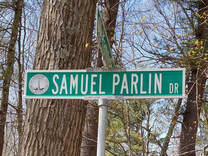 Samuel Parlin died on March 7, 1827, leaving his widow Lucy and four surviving children. At the time of his death, his real estate included the home farm containing 38 acres of land, a 5-acre “Sargent Meadow”, a 6-acre “Chaffin Meadow”, and an 11-acre “Littleton Pasture.” He also had the title to pew number 42 on the lower floor of the Acton Meeting house. Among his personal belongings were agricultural products and tools, cows, swine, sheep, and, oddly, ½ of a horse. Samuel’s widow Lucy survived him by two years, and eldest son Jonathan only by three. The home farm passed to son Davis in 1831. The house eventually went out of the family to Thomas Hammond whose name was given to the road on which they lived. When some of the land was developed in the late 1960s, the new road was given the name of Samuel Parlin Drive. Our research into Samuel Parlin reminded us of a few lessons that are worth repeating. Despite having found what looked like a very complete genealogy of the Parlin family, if we had not checked each item, we would have believed that Samuel had an additional brother named Nathaniel and that Samuel’s son Samuel Jr. lived to adulthood and married a woman named Phoebe. If we had only paid attention to the flag holder in Woodlawn Cemetery, we would have thought that Samuel’s military service was in the War of 1812, not the Revolution. And if we had stopped our searching at Massachusetts Soldiers and Sailors of the Revolutionary War, we would have missed Samuel’s service, the best documentation of which, ironically, is in our own archives. Some Sources Consulted:
In the years before Acton had a high school of its own, students wanting to further their education needed to take opportunities where they could be found. In Acton’s early days, young men were usually the ones to seek education beyond the schoolhouse; they might be given advanced training or prepared for college by a learned individual, often the town’s minister. In the 1800s, more opportunities arose for young men and young women; some might board at private academies or, as time went on, commute to a nearby high school. In the early 1850s, Acton’s advanced students had the option of studying for short periods at a privately-run advanced school. Our Society’s collection includes a program for an exhibition of F. W. Pelton’s High School in the center district of Acton, starting at 6 p.m. on November 19, 1852. It must have been a long evening; there were twenty-seven items on the agenda, including two dramatic pieces. The Exhibition As evidence of what was going on in the minds of young Actonians in 1852, the “programme” is a revealing document. Even in a small town, there was obvious interest in the issues affecting the country as a whole. Abolition was the foremost theme of the evening. Uncle Tom’s Cabin, though now criticized because of its racial stereotypes, was hugely influential in raising awareness of the evils of slavery. It had been serialized starting in June 1851 but had only been out in book form since March 1852. An early performance in Acton, featuring over 30 performers, would have been a notable event. The song “Little Eva” that followed the performance was based on the book and had recently been published in Boston. Other items on the program that involved the issue of slavery were “declamations” on Anson Burlingame’s opposition to the 1850 Fugitive Slave Act, Grimke’s “Bible”, presumably Angelina Grimke’s “Appeal to the Christian Women of the South” (1836), and Henry Clay’s attempts to save “The Union” without war. Other declamations had as their subjects Daniel Webster’s writings on Washington and on “The Present Age,” Lajos Kossuth, a Hungarian leader whose words had managed to catch the popular imagination in the United States, Napoleon, and the Whig Party (written by the schoolmaster himself). We were not able to identify all of the items performed. Ames’ “Character” may have referred to one of Fisher Ames’ writings, but there is not enough information to be sure. Stuart’s “Birthplace of Liberty” and Snowball’s philosophy were similarly hard to pin down. In online searching, some of the titles are now overshadowed by later writings and events. A search for Snowball’s “Philosophy” led to many references to George Orwell’s Animal Farm. Searching for “A Nation Mourns” brought up references to Lincoln’s assassination, and “Modern Humbugs” yielded P. T. Barnum’s book The Humbugs of the World, both dating from the 1860s. (“Modern Humbugs” by Florentinus may have been a tongue-in-cheek piece written by the schoolmaster; see the section on him below.) Drama, songs, and poetry were easier to find. “The Tongue Bridle” was a dramatic piece for “four older girls” published in Boston in 1851. Thanks to the Library of Congress’ Music Division, we were able to find the 1849 Ossian’s Serenade, the 1851 Oh, Must We Part to Meet No More?, and The Green Mt. Yankee, a Temperance Medley, published in Boston in 1852. Once we had navigated past references to Led Zepplin songs, we were able to find an 1848 song by I. B. Woodbury that set Tennyson’s poem "The May Queen" to music. Henry Theodore Tuckerman’s “Love and Fame,” Henry Wadsworth Longfellow’s 1841 “Excelsior,” and Henry Ware, Jr.’s “To the Ursa Major” can all be found in online poetry collections. The only item with a strictly Acton theme was Pierpont’s poem “Acton Monument.” One wonders if the entire poem describing the events of April 18-19, 1775 was recited; even at its debut, the audience became impatient with its length. Rev. John Pierpont of Medford presented the poem at the celebration of the completion of Acton’s Monument in 1851. The reverend had the misfortune that day of being slated to recite after an hour-long address by Governor George S. Boutwell and just before the meal was served. Hungry attendees started eating during his recital of the poem, and the clatter of utensils clashed with the sound of the reverend’s voice. Apparently, he got quite upset. Acton’s Rev. Woodbury, who could have tried to quiet the crowd, instead said a quick grace and let the dinner officially begin. Boutwell’s Reminiscences quote Woodbury as telling the poet, “They listened very well, ‘till you got to Greece. They didn’t care anything about Greece.” (page 130) By that point in the day’s speeches, the audience might have been losing enthusiasm for Acton as well. Later, obviously having calmed down, Rev. Pierpont commented on the situation that “Poets at dinners must learn to be brief, Or their tongues will be beaten by cold tongue of beef.” [Boston Evening Transcript, Oct. 30, 1851, p.1) The audience at Pelton’s High School Exhibition had to have been tired by the end of the evening. After speeches, songs, poetry, and drama, Arthur Cowdrey capped off the event with a declamation in Latin from Virgil. Presumably this was to wow the audience. (Clearly, Mr. Pelton was able to teach his students a range of subjects.) Miss A. B. Fletcher performed her fourth musical number, and the evening was finished. Acton’s Private High Schools
We had thought that perhaps F. W. Pelton’s high school was unique to him. However, a speech by one of his former students explained that Acton’s private high school, at least for a time, was an annual occurrence taken on by a college student during a break from his studies. It allowed a college student to earn funds and benefited the townspeople by supplementing their publicly-funded education. Eben H. Davis told Acton’s high school graduates in 1895 that: “When I was a boy, the only high school in the town was a private enterprise, held but a few weeks in the fall, in the centre of the town, and kept by some college student to eke out his college expenses. There was no orderly course of studies, but each student selected such branches as his fancy dictated or friends advised, for which he paid his own tuition. In this way it was possible to obtain a smattering of Latin or Greek, an introduction to the elements of science, and some knowledge of mathematics. But, in order to fit for college, I had to attend an academy, one hundred and fifty miles from home. ... I would by no means speak lightly of the schools of my boyhood days... Nor were those brief terms of high school studies without influence. They opened up to us new lines of thought, and the personality of the teachers, fresh from college and imbued with zeal for a higher education, made a strong impress. It was through contact with such influences that I was inspired with an ambition to go to college.” (Town Report 1896, p. 83-84) Contrary to what we had expected, this high school was not simply for older students who had progressed beyond the curriculum of Acton’s schoolhouses. Some of the students were fairly young. From reading school committee reports of the time, we discovered that the public schools in the early 1850s had a summer term and a winter term; the private school in autumn obviously filled a gap, not just of higher learning, but in a time of the year when scholars would not have been able to continue their studies. We have not yet found all of the college students who led a private autumn high school in Acton, but we did find mention of a Mr. Cutler who seems to have run a popular private school in the fall of 1848. The school committee report of 1848-1849 alludes to the difficulties of a Winter Term teacher, Dartmouth College graduate Mr. Whittier, who had come with great recommendations. “Mr. Whittier, in assuming the duties of his school, was somewhat in the position of the poor king who followed the people’s favorite, when nature’s poet said, ‘As when a well graced actor leaves the stage, All eyes are idly bent on him that enters next.’ Mr. Cutler in his select school had won all hearts, both of parents and children, and they thought his like would never appear again. This feeling among the leading scholars was a great injury to the school, which ought to have been one of the best.” We will set aside research into Mr. Cutler’s identity for another day. If anyone knows more about him or other Acton private school teachers, please let us know. The 1852 Schoolmaster, F. W. Pelton We know very little about F. W. Pelton’s brief time in Acton. We were able to identify him because the 1853 school committee report mentioned hiring F. W. Pelton “of Union College” to teach the Centre School in the winter term 1853 after he had run a private school in Acton Center in the fall of 1852. The mention of Union College allowed us to confirm that he was Florentine Whitfield Pelton, born in Somers, CT on April 23,1828 to Asa and Lois Pelton. According to Jeremiah M. Pelton’s Genealogy of the Pelton Family in America (page 477-478), Florentine Pelton left home at a young age, supposedly taught in New Jersey, and furthered his studies at Wesleyan Academy in Wilbraham, MA and Union College. The year in which F. W. Pelton taught in Acton was an unusual one. At town meeting the previous April, Acton had elected a School Committee of three clergymen. All three had left town by the end of the year. (One was Rev. J. T. Woodbury, discussed in a previous blog post.) Ebenezer Davis and Herman H. Bowers wrote the subsequent School Committee report. Two of Ebenezer Davis’ children had attended Pelton’s fall High School. F. W. Pelton’s winter term at the public school seems to have been much less successful than his private school experience. (School committees in the nineteenth century could be merciless in their reports, and teachers had no ability to present their viewpoint.) It is likely that having 52 students of varying ages, with an average attendance of 44, was a contributing factor, as well as the fact that the curriculum would not have been driven by students’ interests as it was in the private school. Pelton may already have been in career transition during his Acton period. He soon made the law his career, studying with C. R. Train and at Harvard Law. He was admitted to the Middlesex County bar in 1855, and practiced first in Marlborough and then in Boston. He married twice, first to Laura M. Buck, a graduate of the State Normal School at Framingham, MA, on Dec. 18, 1855. The couple had two children before Laura died from complications of childbirth in 1860 in Newton where they were living at the time. Pelton married Mary Reed Whitney in Waltham, MA on Nov. 20, 1862, and the couple had eight more children. In addition to practicing law, Pelton dealt in real estate and was responsible for the construction of a number of houses in Dorchester, MA. Toward the end of his life, he retired from the law, focusing on various business ventures. He settled in Dedham, MA where he died of “chronic peritonitis,” probably a complication of his diabetes, on June 25, 1885 in Dedham. We found no reference to Florentine W. Pelton’s time in Acton in newspapers, family histories, or obituaries. However, his experience there may have led to this thought from the report of the Newton Grammar School Sub-Committee, of which F. W. Pelton was a member in the 1860s: ”If the varied, difficult and exhausting work of the school-room could be understood at home, there would be more sympathy and less fault-finding with the teacher.” (Annual Report, Mass. Board of Education, Vol. 27, 1864, p. 92) Indeed. The Exhibition Participants There are many names on Pelton’s 1852 Programme, but there were only a few that we could not track down. Perhaps those students were not residents of Acton; the school committee report of 1853 mentioned that some private school scholars in the past had come from out of town. (p. 5) In the rest of the cases, we found individuals who would have been between twelve and eighteen in the fall of 1852. Among the sources we used were school committee reports; it is not surprising to find that young scholars who were enrolled in an extra school in the fall of 1852 were also commended for excellent attendance at the public schools. As best we can reconstruct it, the following is our list of Pelton’s high school exhibition participants: 12/21/2020 George C. Wright, Coffee PioneerNote: A family member, having read our original blog post of Dec. 2020, shared with us a remarkable set of documents - “Reminiscences of West Acton and of Personal Life,” “Travels,” “West Acton in the War for the Union 1861-1865,” and “Conditions of Success,” all written by George C. Wright. Historians’ dream sources, they necessitated a revision to our original blog post. It is a good reminder that there is no substitute for people’s first-hand accounts! With gratitude to the family for preserving and then sharing such rare material, we have updated our biography. 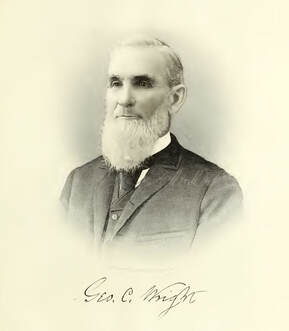 George C. Wright does not often come up today when discussing Acton history. Well-known in his own time, his name seems to have faded from our collective memory. However, his life story conformed to the late nineteenth century ideal of a man who started with nothing and became a success. He lived long enough that he was featured in town histories and newspapers, giving us access to information about him. Biographies emphasized that he was a self-made man. As we investigated other sources, we found that though he was self-reliant from a young age, his life was filled with connections to family, friends, and community. He was no loner. George Cleavland Wright was born in Bedford, Mass. on Jan. 7, 1823 to Joel and Dolly H. (Reed) Wright. His mother had been a school teacher in Boxborough, a fact of which George C. seems to have been quite proud. According to an 84th birthday biography, he “shared the vicissitudes of a large family in humble circumstances.” (Concord Enterprise, Jan 9, 1907, p. 8) At least seven children were born to Joel and Dolly; birth records are not comprehensive, but later records mention the children’s birthplaces as Acton, Bedford, Boxborough, Concord, Littleton (in MA) and Jaffrey, NH. In his Reminiscences, George C. says that the family moved to Jaffrey, NH, for a few years, then Littleton, MA, and then to live on the Acton Center farm that later belonged to Rev. James T. Woodbury and Daniel Tuttle. From there, the family moved into the brick house in Boxborough opposite the Congregational Church. It seems that George C.’s early vicissitudes included moving frequently. George C. Wright went to district schools but was already working outside the home by the age of ten. He was self-supporting by fifteen. He went to work for Christopher Page of Boxborough, intending to learn the carpenter’s trade. A serious accident to one of his knees ended that potential career, and while recovering he looked for a way to make money with his arms and hands. He had the chance to learn the shoemaking trade from a Mr. Wyman in Bedford. After his three months of training, the business was apparently in a slump, and the payment for a pair of child’s shoes was only ten cents a pair. He made $3.80 a week, of which $2 had to go to his room and board, but he managed to save up $40 in a little more than a year. About this time, George C. went to a temperance convention in Lexington where he met John Fletcher of Acton whose shoe business had transformed Acton Center. Mr. Fletcher offered George C. a better deal, fifteen cents for children’s shoes and, eventually, even more for women’s shoes. After he had worked for Fletcher for a little more than a year, George C. sensed an opportunity. The extension of the Fitchburg Railroad through West Acton in 1844 would give the village easy access to the city, both for goods and people. Around that time, George C. Wright moved to West Acton, first working in a shop belonging to John Woodbury and then going into the shoemaking business for himself. His shop was on the second floor of the general store on the corner in West Acton. He was successful, in a good year making $400. John Fletcher eventually prevailed upon George C. to come back to work for him, so George C. sold his stock to Fletcher and worked another year for him. On Dec. 31, 1846, he married a West Acton native, Susan Haskell Davis. Susan was the daughter of Jonathan Billings Davis and Sally Hosmer, both with deep roots in Acton and relatives of men killed in the Revolutionary War. In 1844, George C.’s sister Mary had married Martin Hayward in Boxborough, a family connection that soon became a business one. Martin and Mary moved to Charlestown. In their daughter Annette Hayward's birth certificate in 1848, Martin was described as a milk dealer. In West Acton, Captain James Hayward had begun a business of buying local farmers’ milk, taking it to the city on the train in milk cans to sell to dealers. Capt. Hayward apparently convinced George C. Wright to take up the milk business as a “milk peddler in Boston”. Though less dull than shoemaking, it was hard work. He described in his Reminiscences that he had to get up at 3 am and be making rounds by 4 am in the summer and only an hour later in the winter. He did his milk route twice per day and had to spend time washing cans, putting in twelve-fourteen hours per day. George C. did a two-year stint in the milk business. He worked up to dealing with more than 120 cans per day. Selling milk for five cents per quart, making sure to keep consistent quality, he made good money, clearing $200 in his final month in the business. When George C. Wright began in the milk business, he and Susan moved to Charlestown. Their first-born child, Estella, was born there on Dec. 20, 1849. The father’s residence was given as B[unker] Hill Street, and his occupation was shown as “Milk Man.” They must have spent some time in Acton, however, because the 1850 census showed shoemaker George C. Wright living in Acton with wife Susan and daughter “Esther M.” (Estella) in a two-family household with George’s sister Sarah and her husband Edwin Sawyer, a wheelwright. Growing family, Growing Business According to biographies, George C. Wright entered the coffee business at the age of 31, around 1853-1854. In the 1855 Massachusetts census, George C. Wright, wife Susan and daughter Estella were living in Charlestown in a two-family dwelling with trader Martin and May “Heywood” and their daughter Annette. George’s occupation was “coffee dealer.” George and Susan had moved to 84 Green Street in Charlestown by August 1856. A number of other family members were already in Charlestown as well. George C. and Susan Wright had seven children. Sadly, three of their children died young.
The coffee firm for which George worked was Hayward & Co. It was clearly a family affair. Biographies, advertisements, directories, and census records indicate that Martin Hayward was already in the coffee business by 1850, but he was soon joined by George C. Wright, who according to later biographies was an equal partner. According to George’s Reminiscences, after George C.’s two years in milk, Martin Hayward invited George to join him in the business of turning green coffee berries into a state ready for consumer use. At first, they worked for wholesale grocers, taking their raw coffee and returning it ready-for-sale. Eventually, they were encouraged to buy raw coffee themselves, and the pair became coffee dealers. At some point, George’s brother-in-law Silas Davis became a partner in the business as well. By 1856, George’s brother Emery (who had been a shoemaker and then in the milk business) was working in coffee. He seems to have spent the rest of his career in the business and much of the time in George’s company, according to Boston directories. The 1854 Boston directory shows Hayward & Co. at City Coffee Mills, 75 Charlestown, Boston. Principals were Martin Hayward, Joseph Maynard and George C. Wright. Later, the company’s address was 5-7 Haverhill Street in Boston. George C. Wright was the coffee buyer for the firm, making frequent trips to the New York coffee markets. He was apparently very good at his job, and showed particular wisdom (or luck) in the 1886-1887 year when Brazilian coffee prices went up 250% in one year. A booklet published by George C.’s company (c. 1907) mentioned that in the early days, most coffee buyers relied on the look of the green coffee berries for their purchasing decisions, but George C. Wright took samples and roasted them in an old-fashioned corn popper. This method apparently worked well for 35 years. Outgrowing the corn popper, eventually six small roasters were added. By the time of that publication, sampling and tasting were common practices in the coffee industry. He was well-known to the “coffee men” of the country; he was the driving force behind an effort to reduce an apparently unintentionally severe tax on coffee during the Civil War. His efforts were successful, no doubt gaining him many friends in the industry. Around 1855, George became so seriously ill for a period of about two years that he did not know if he would be able to continue working. Except for noting that it was not the fault of the coffee business, he did not explain his illness in his Reminiscences. During this period, hoping for his health to improve, he traveled to Saratoga and Philadelphia for several months and took a five-week trip on a fishing schooner that gave him an appreciation for the difficulties of fishing for a living. Eventually, he and Susan decided that it would be better for his health to return to West Acton to live. In his words, they “carried out that decision in the spring of 1861. Having secured the land, I built the residence which has been our home since the autumn of 1861. I felt that good air and a plenty of sunshine would do more for my health than anything else. For this reason, we built upon a hill and arranged the rooms of the house so as to get the sun to its fullest degree.” (Reminiscences, p. 5) George C. recovered his health and was able to devote another fifty years to his business. The Historical Society owns the Fitchburg Railroad log book used at the West Acton station during the 1850s-1860s. We found the following 1861 shipments for George C. Wright, most from Charlestown: 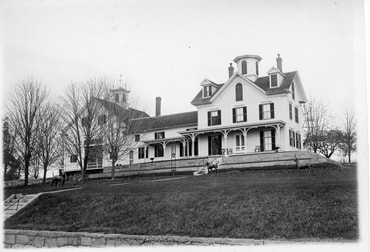
After settling into his new home in West Acton, George C. served on the school committee in the 1862-1865 school years, with a particular focus on the West Acton school. He is mentioned in letters (held by the Society) written by Clara Hapgood, a local teacher during the Civil War. Her letters refer to Mr. Wright examining her school and delivering her pay. George C.’s assessments were printed in the annual town reports. His largest contribution to the schools was to have served as the chairman of the committee overseeing the building of a new “beautiful and commodious” school house in West Acton in 1872. It was he who suggested the site, now Gardner playground. Though the site was a successful one, there was a bitter fight over it, litigation, and a taking of the land by eminent domain. George C. also had a lasting effect on West Acton village as one of the three largest contributors toward the building of the Universalist Society Church on Central Street in 1868. According to George’s Reminiscences, the West Acton Universalists had been meeting in Charles Robinson’s Hall (that he believed the Universalists had contributed to) and were sharing cost of the minister with the Universalists in South Acton. There had not been much motivation to build a separate building until the Baptists refused to allow their church building to be used for a funeral led by a Universalist minister. His memoir says nothing about his contribution to the building, but he does mention that “The Universalist meeting house has been used for Congregationalist preaching some of the time, and it is at the service of the public for funerals, or for any other suitable purpose at any time. I am glad to note the fact that the strong sectarian feeling which was so apparent, even a quarter of a century ago, is no longer evident. It is now generally admitted that men may differ in their religious views and be sincere.” (p. 6) George C. continued to be a substantial supporter of the Universalist church and faithfully attended for decades. After moving to West Acton, in addition to working in the coffee business, George C. Wright farmed 60 acres. As he described it, “For a number of years... I kept a diary, looked after my cows, delivered the milk to families in the village and then took the first train for Boston, attending to my farm work upon my return at night. I used to think the change of pursuits did me good, but I confess it was hard work.” (Conditions of Success, p. 2) The New England Farmer, a Boston newspaper, reported that at an 1869 agricultural exhibition, George C. had the best Jersey bull and award-winning poultry. (Oct. 16, 1869 p. 2) Presumably, George C. hired help eventually. The 1870 agricultural census shows that he had 23 “improved” acres in Acton worth $5,700 and that he had paid $395 in agricultural wages. His livestock included two horses, two milch cows, another cow/bull and two swine. Crops were “Indian” corn, “Irish” potatoes, butter, and hay. The West Acton Farmers Club chose George C. Wright as their Vice-President and later their President. He also became a Life Member of the Massachusetts Horticultural Society. George C. was busy with real estate deals as well. He bought some land on his own account (including land from Susan’s father). He also lent money, holding mortgages on properties around Acton. He lent money to his sister’s husband Edwin Sawyer in 1859. The 1872-1873 Acton annual report shows George C. Wright had lent the town $3,000, evidently a short-term loan, perhaps related to the construction of the West Acton schoolhouse. In the 1872 valuation, he was holding $5,000 of mortgages. In that valuation, we also discovered that the house, barn, and home place were listed under Susan’s name, rather than George’s. Presumably this was a legal protection of Susan, although we have not found any details. By the 1870s, life in the Wright family was already changing. In December 1870, eldest daughter Estella married George W. Crampton, a native of Vermont. Son George S. went to Charlestown around 1872 to go to high school. Daughter Effie attended grammar school in West Acton, but she eventually graduated from Charlestown High School as well. In November 1873, George C. Wright was nominated as a Republican to represent Acton, Wayland, and Sudbury in the Nineteenth Middlesex District. He did not seek the nomination. The contest was between three candidates including a Democrat and a Prohibition candidate. George C. won by a plurality of 30 votes. The newly elected Representative hosted a celebration, attended by nearly a hundred people, at his “attractive residence.” (Boston Journal, Nov. 14, 1873, p. 2) According to his obituary (Concord Enterprise, July 20, 1910, p. 8), “Though a Republican in politics, Mr. Wright has never hesitated to work and vote for principles, not party.” In 1877, for reasons that were never discussed in histories, Hayward & Co. merged with a well-known competitor to become Dwinell, Hayward & Co. The principals of the new business were James F. Dwinell, Martin Hayward and George C. Wright, all later pictured in Ukers’ 1922 All About Coffee as pioneer coffee roasters. (p. 500) The new company operated at 1 and 3 Hamilton St. in Boston (at the corner of Wendell). In addition to coffee, they also sold “absolutely pure spices.” George C.’s son George S. Wright, after a post-graduate year of education, went to work for the new firm that became the largest coffee and spice house in New England. Susan’s brother Silas Davis left and joined with two other former employees of Hayward & Co. to form a new coffee and spice partnership that operated at the old Hayward & Co. site. The 1880s brought more changes. When it came time to choose spouses, the three unmarried Wright children all chose Meads, children of George’s longtime friends. The Mead brothers, who like George C. had spent their early years in Boxborough, were the driving force behind much commercial activity in West Acton and beyond through the extremely successful firm A. & O.W. Mead & Co. George and Susan’s son George Sumner married Emma A. Mead, daughter of Oliver W. and Mary E. (Hartwell) Mead in 1881. Two years later, daughter Effie Rosella married George Varnum Mead, first cousin of Emma and son of Varnum B. and Direxa E. (Stearns) Mead. Daughter Theodosia Bertha chose George Varnum Mead’s brother Adelbert F. Mead. Theodosia and Adelbert were both born in West Acton six days apart. They married in 1889. The 1890 Acton valuation shows that family ties again were mixed with business. George C. Wright and his friends Adelbert and Oliver W. Mead were involved (with Luke Blanchard) in the Middlesex Live Stock Company. We were not able to find anything else about the company. In 1893, Martin Hayward retired from Dwinell, Hayward & Co. The company was to go on with that name even after his retirement; biographies emphasized that despite having been an equal partner for years, George C. Wright never insisted on having his name on the firm. However, apparently it became a practical necessity, and finally the partnership was renamed Dwinell, Wright & Co. in 1894. An ad in the April 19, 1895 Middlesex Recorder showed that they had branches in Chicago, Cincinnati and St. Louis. Their Boston Office and Factory were at 1 & 3 Hamilton St., 35 and 37 Batterymarch St. (p. 3) After James F. Dwinell’s death in 1898, George C. Wright incorporated the company as Dwinell-Wright Co. As they got older, probably because the younger generation was able to take on more of the management of the coffee & spice company, George and Susan were able to take some time to travel. They took a trip to California in 1882. They traveled to New York, Washington, D.C., and Florida in 1892. In 1893, they took an excursion trip to New Orleans for Mardi Gras and then on to Texas and a month-long tour of Mexico. George took two trips to London, primarily for the benefits of ocean travel. In 1894, however, George, Susan, their daughter Estella Crampton, and her daughter did an ambitious European tour for three months, returning at the end of August. (Estella kept a diary of the trip which, combined with George’s observations, became part of his “Travels” reminiscences.) They visited Ireland, Scotland, England (mostly London), Holland, Belgium, Germany, Switzerland, Italy, and France. They travelled by ship, train, “steam and electric cars,” cog-railway, funicular railway, open and closed carriage, boat, gondola, wagon, and even donkey. The evening after their return, George and Susan were given a “very agreeable reception” at their home with a large number of friends and neighbors welcoming them home. “Mr. and Mrs. Wright have enjoyed their trip very much and their appearance indicates they may have found ‘the fountain of perpetual youth’ somewhere in their journeyings.” (Concord Enterprise, Aug. 30, 1894, p. 8) George and Susan seem to have been quite hospitable people. The location of their home lent itself to sharing with the community, especially on the fourth of July. The Concord Enterprise mentioned that “Fireworks on Wrights’ hill in the evening were enjoyed by all.” (July 12, 1889, p. 2) In 1892, the paper mentioned that the ascent and descent of a balloon in Marlboro on July 4 could seen from Wrights’ hill, as well as fireworks in the evening. In 1895, several citizens contributed to “quite a display of pyrotechnics the evening of the fifth from Wright’s hill.” (Concord Enterprise, July 11, p. 8) On December 31, 1896, George and Susan’s Golden Wedding Anniversary celebration “far eclipsed anything of its kind ever held in this town. Seven hundred invitations had been sent and the great number present gave evidence that there were not many regrets received.” (Concord Enterprise, Jan. 7, 1897, p. 8) Employees of Dwinell, Wright from far and near, “the Boston coffee and grocery trade”, politicians, church members, West Acton residents, family, and friends all attended. A special train took the Wrights’ guests back to the city after the event. President and Mrs. Grover Cleveland apparently were two of the few who sent regrets. (Boston Globe, Jan. 1, 1897, p. 4) Looking Back and Looking Forward George and Susan were both directly descended from Revolutionary War soldiers. Susan, as mentioned earlier, was related to both Capt. Isaac Davis and Abner Hosmer, two of the three Acton men killed on April 19, 1775 and honored by Acton’s monument on the town common. The Wrights probably attended the dedication of the monument in 1851. George C. Wright and Oliver W. Mead seem to have been involved in planning the 1875 Centennial celebration in Concord. As part of Acton's ambitious Patriots’ Day celebration in 1895, a large ball was held in Littlefield Hall in West Acton (just down the hill from the Wrights’). George C. Wright was given the honor of leading the “grand march.” In 1900, George funded the installation of a hewn granite monument from the Acton quarries in front of the birthplace of Captain Isaac Davis, the property where Susan had grown up. The monument was dedicated by the Sons of the American Revolution at a “field day” they held in Acton in September. “The society voted that the name of Mr. Wright and the date of unveiling be added to the inscription on the tablet.” (Concord Enterprise, Oct. 4, 1900, p. 2) As is typical of the time, newspapers and histories devoted much more space to men’s activities, so it has been hard to learn much about George C.’s wife Susan. However, George C. clearly felt that she belonged on the monument, so the final product said that it was “Erected by Mrs. Geo. C. Wright a grand-niece of Capt. Davis.” George and Susan provided a lunch of sandwiches and (of course) coffee, served on a neighbor’s lawn by “young ladies, representatives of Acton’s leading families.” (Concord Enterprise, Oct. 4, 1900, p. 2, 8) One cannot help wondering how families achieved the “leading” distinction. On Feb. 2, 1904, the Boston Globe (p. 12) reported a fire at the five-story building of Dwinell-Wright on Batterymarch Street in Boston. More than thirty women who worked in the building were alarmed but had managed to exit safely. (The Globe neglected to mention any fear on the part of male employees.) The damage, fortunately, was minimal. Later that year, Dwinell-Wright Co. moved to a new building constructed for it at 311-319 Summer St., at the corner of A Street. It was built into a slope that created convenient street and shipping entrances. The street level (actually floor 3) had offices, a sample room, and a printing plant for labels. Spice packing and grinding were on the 4th and 5th floors, and coffee packing and roasting were on the top two floors of the building. Below the level of Summer Street, the 2nd floor had direct shipping access to a railroad spur built by the New York, New Haven & Hartford Railroad. The Globe reported that “All labor-saving devices known to the trade, and some never seen before, are being installed... Automatic weighing machines, watchman’s clocks, telephones and elevators, automatic regulators of the heat, light and power plant... On the top floor are the coffee roasters (Jabez Burns’ latest pattern) located under an immense glass-covered monitor roof which floods the apartment with the direct light so essential to success in the delicate operation of roasting coffee. This ‘Burns’ machinery will easily handle 60,000 pounds of roasted coffee per day.” (Aug. 22, 1904, p. 3) Clearly, the firm was thriving. George C. Wright had the satisfaction of seeing his company survive and be passed down to the next generations. His son, George S. was treasurer of the company and later became its president. In his Conditions of Success, George C. stated that “In these last years my success has come to me largely by the loyal cooperation and able management of my son.” Dwinnell-Wright Building photos courtesy of Boston Public Library via DigitalCommonwealth.org In 1905, George C. Wright served on Acton’s “old home week” committee. It was estimated that over a thousand people were fed in the collation. “Mr. George C. Wright added to the many obligations for which the town is indebted to him by giving an unlimited supply of his best coffee.” (Acton Town Report, March 10, 1906, p. 60) George C. Wright was known for his generosity. He covered the operating expenses for Citizen’s Library when the funds from a bequest were not yet available (Boston Herald, Dec. 30, 1906, p.4). According to Phalen’s History, George C. Wright offered to fund the building of a chapel at Mt. Hope Cemetery. “Due to a lack of understanding or to the extremely modest ideas of the town officials, a small building was erected which although quite different from what he had envisioned, Mr. Wright agreed to accept and present to the town for whatever purpose it might serve.” (p. 308) The town thanked him in the March 1909 town meeting. The building served for some years as a chapel and later was used as an office and storehouse. George C. Wright continued to commute daily into the city well into his mid-eighties. A story of his life on the occasion of this 84th birthday stated that “he may be seen each day through storm or sunshine satchel in hand en route for the early train for Boston. Aside from somewhat defective eyesight Mr. Wright is a well preserved man with a young heart and takes an interest in whatever cause he may do good.” (Concord Enterprise, Jan 9, 1907, p. 8) Unfortunately, even Susan and George eventually had to slow down. In June 1908, Susan fell and had to have a nurse’s assistance while she recovered. In June 1909, George C. was trying to board a streetcar at Adams Square in Boston, when “he was knocked down by the hurry and rush of the passengers, his hip being broken by the fall." (Concord Enterprise, June 16, 1909, p. 8) The Herald reported that he had broken his thighbone. (June 20, 1909, p. 17) He spent nine weeks hospitalized in Boston. Later that year, Susan and George C. were both doing well enough to “sit out on their piazza both morning and afternoon and on the coldest days, too.” (Concord Enterprise, Dec. 22, 1909, p. 8) George C. Wright had been known for his energy, so despite his age, his death of heart trouble came “very suddenly” on Sunday. July 10, 1910. The funeral was held at the Universalist church, “filled to the utmost capacity.” (Concord Enterprise, July 20, 1910, p. 8) He and Susan had been married 63 years. Susan died three months later on October 16, 1910. They were both buried in Mount Hope cemetery. A few years before his death, the Boston Herald described George C. Wright as “a gentleman of the old school, a business man of unimpeachable integrity.” (Jan. 8, 1903, p. 7) Though he was portrayed in life stories as a completely self-made man, he had many family ties. Whether he was sharing the fruits of his labor and talents with family members or vice versa, there was certainly a web of family relationships involved in his business ventures. His children and grandchildren created many more ties among business, friends, and family. Though many of them eventually settled closer to Boston, the contributions of George C. Wright and his wife Susan still affect West Acton. The Wright Hill Conservation land has preserved some of the family land for the enjoyment of Actonians, although trees now block much of their famous view. Can you add to our Wright collection? Though our historical society has gratefully received donations of wonderful items from the Wright/Mead family, especially the recent addition of George’s reminiscences, we are missing photographs of family members. From histories, we have been able to find pictures of George C. and George S. Wright. We know that George C. Wright owned a camera because he was thanked in 1890 for taking a picture of a portrait of Isaac Davis’s wife several years earlier. We also know that pictures of the family were taken at their West Acton home; we would be very grateful for donations of photographs or scans of the Wright/Mead family and of gatherings at the Wright house. Please contact us if you can help. From the AHS Collections: Major Sources for George C. Wright:
See also our blog post on the West Acton and Boxborough secession proposal of 1868-1869 for a discussion of George C. Wright's role. |
Acton Historical Society
Discoveries, stories, and a few mysteries from our society's archives. CategoriesAll Acton Town History Arts Business & Industry Family History Items In Collection Military & Veteran Photographs Recreation & Clubs Schools |
Quick Links
|
Open Hours
Jenks Library:
Please contact us for an appointment or to ask your research questions. Hosmer House Museum: Open for special events. |
Contact
|
Copyright © 2024 Acton Historical Society, All Rights Reserved
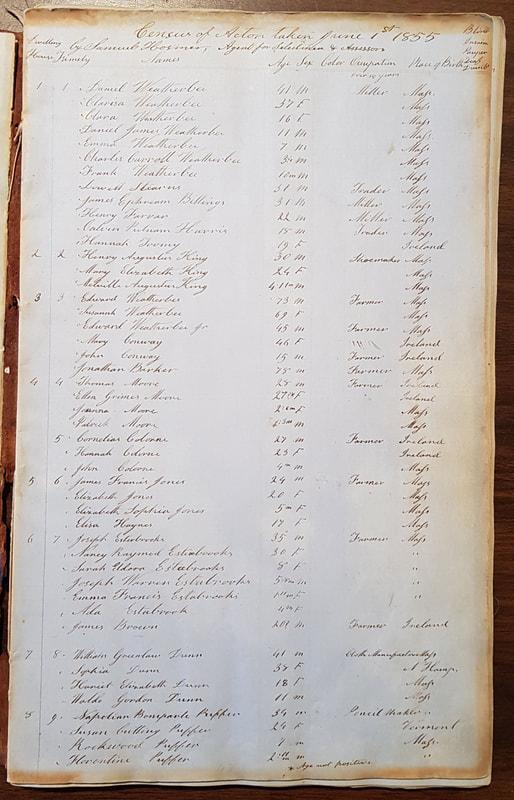

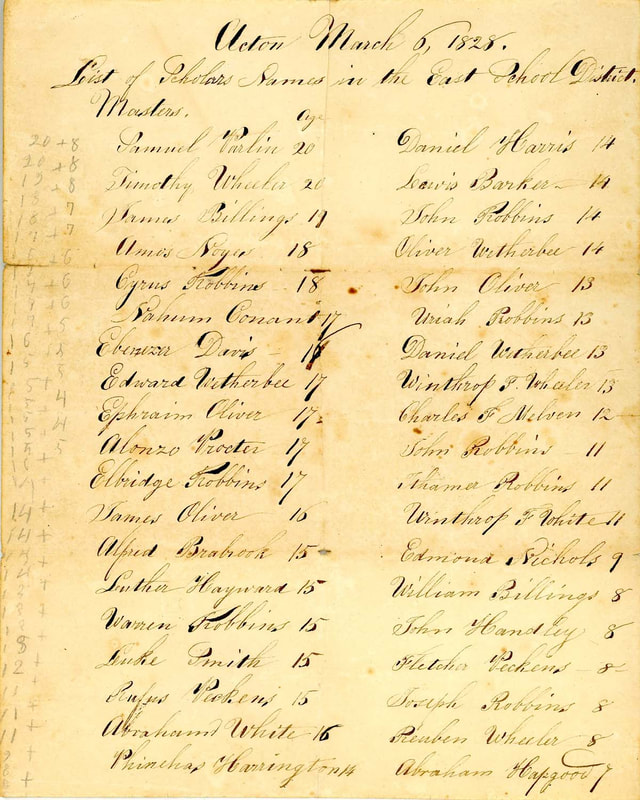
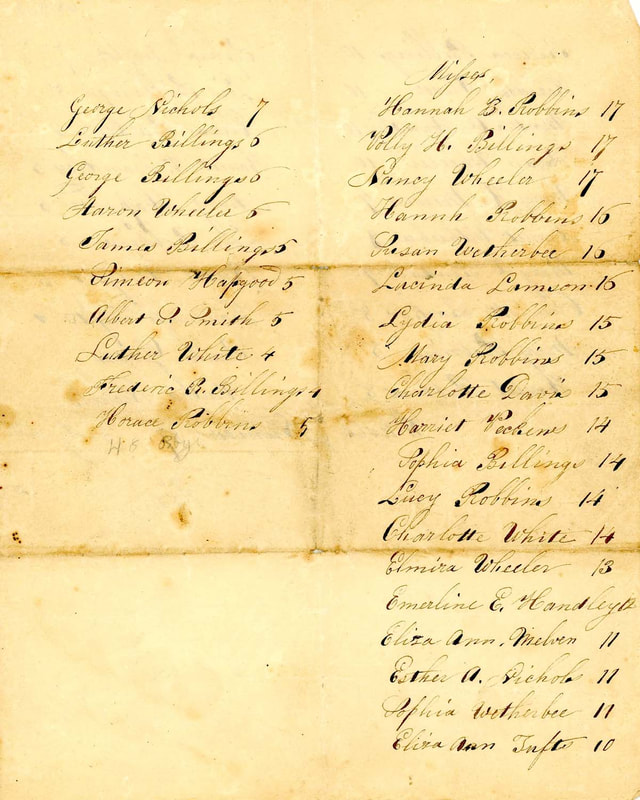
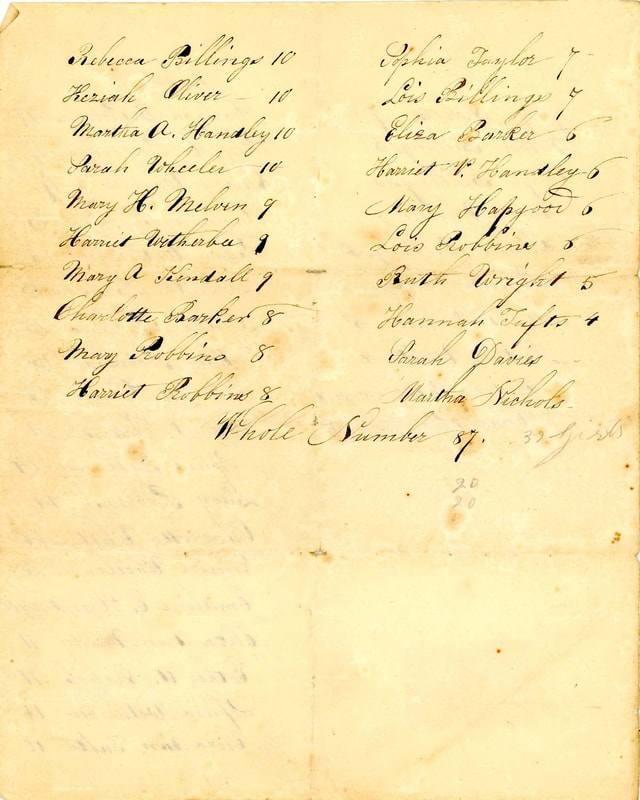
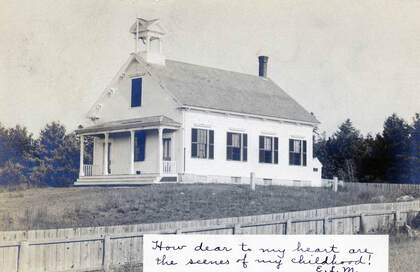
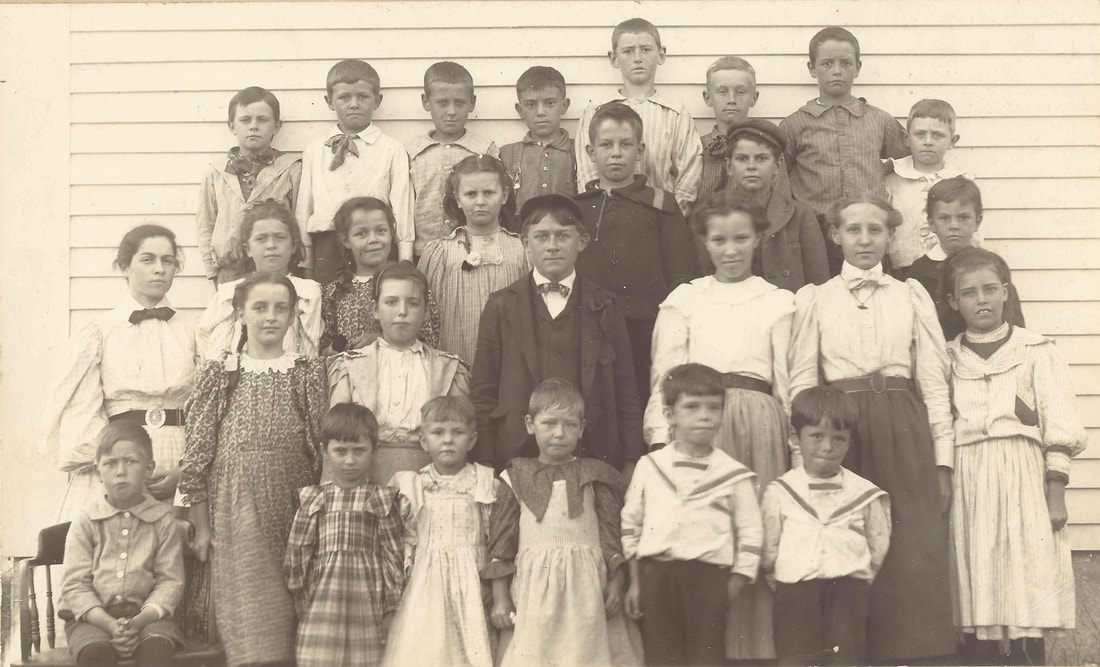
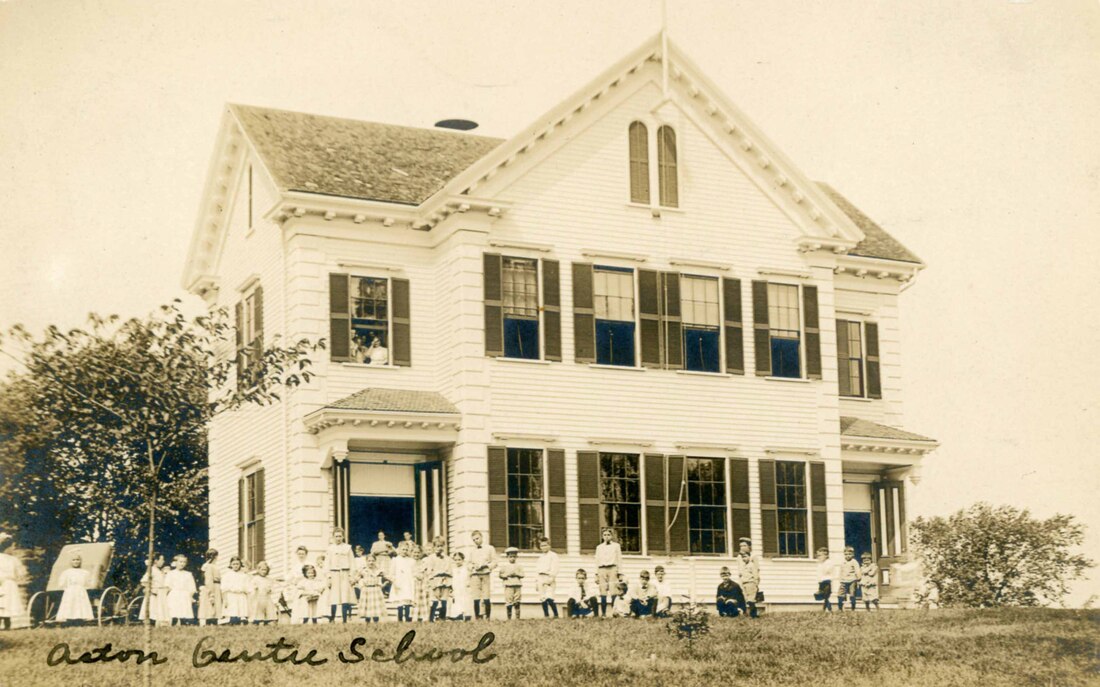
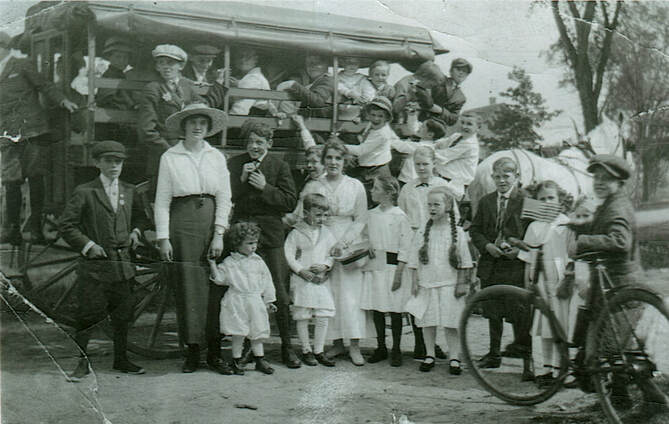
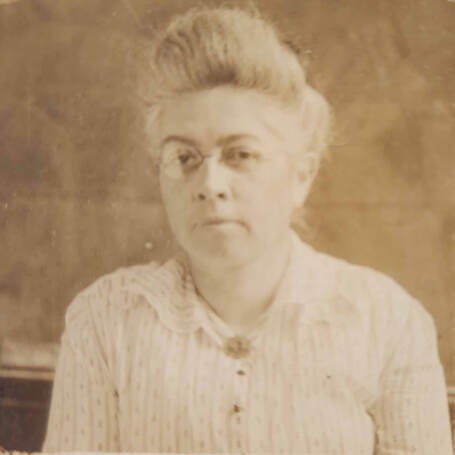
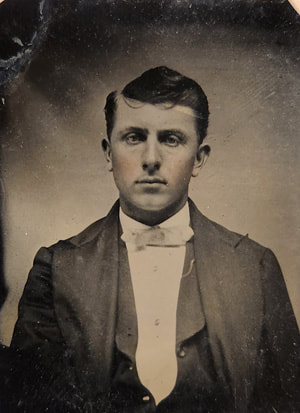
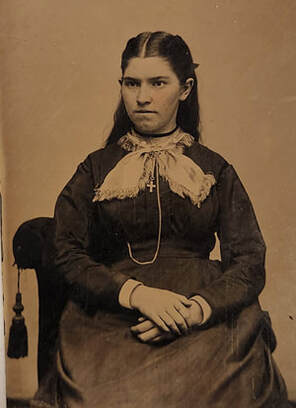
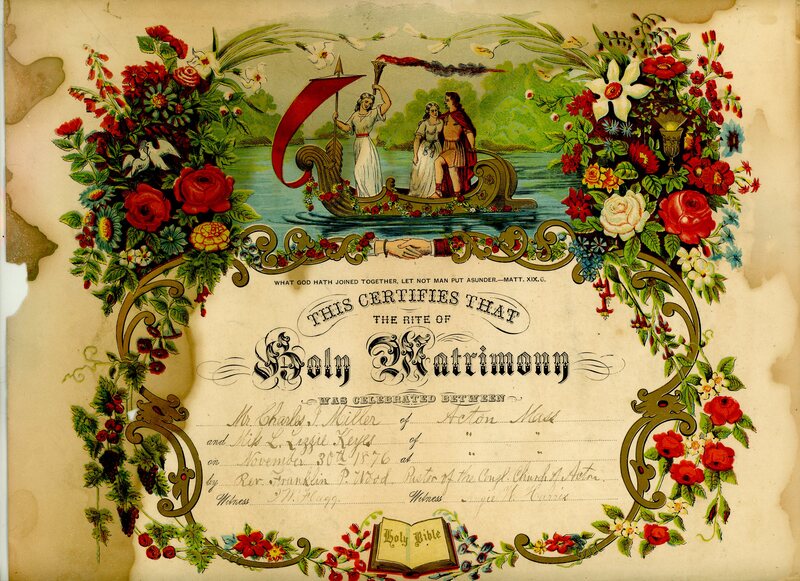
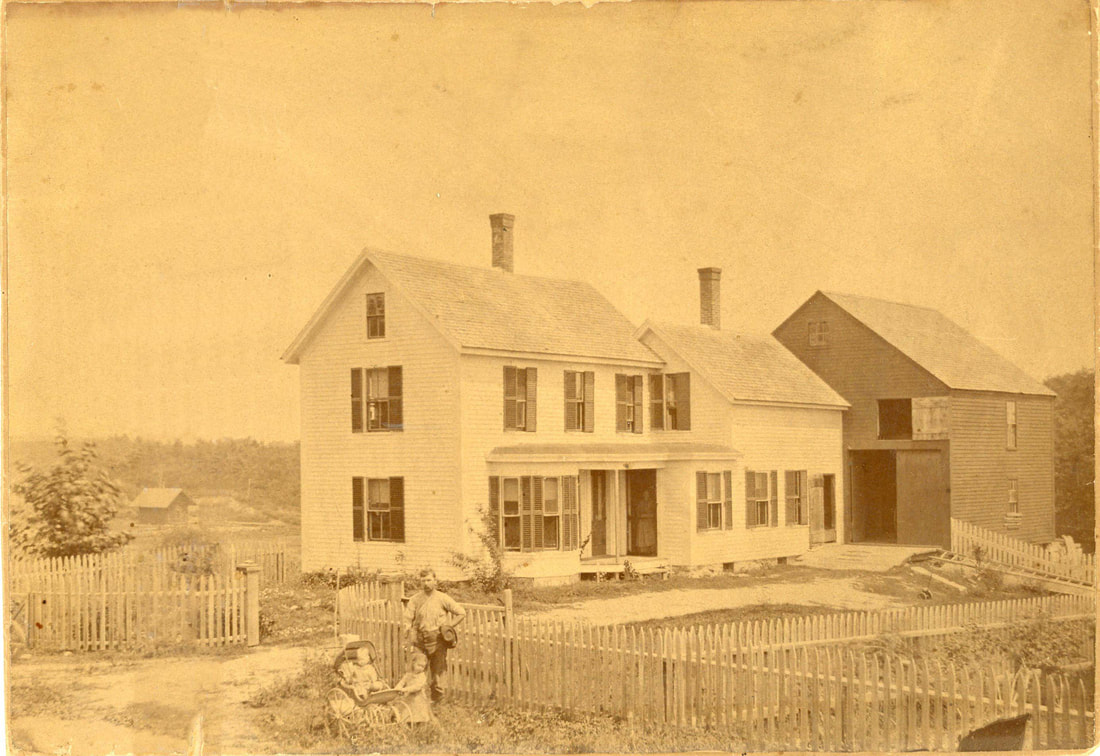
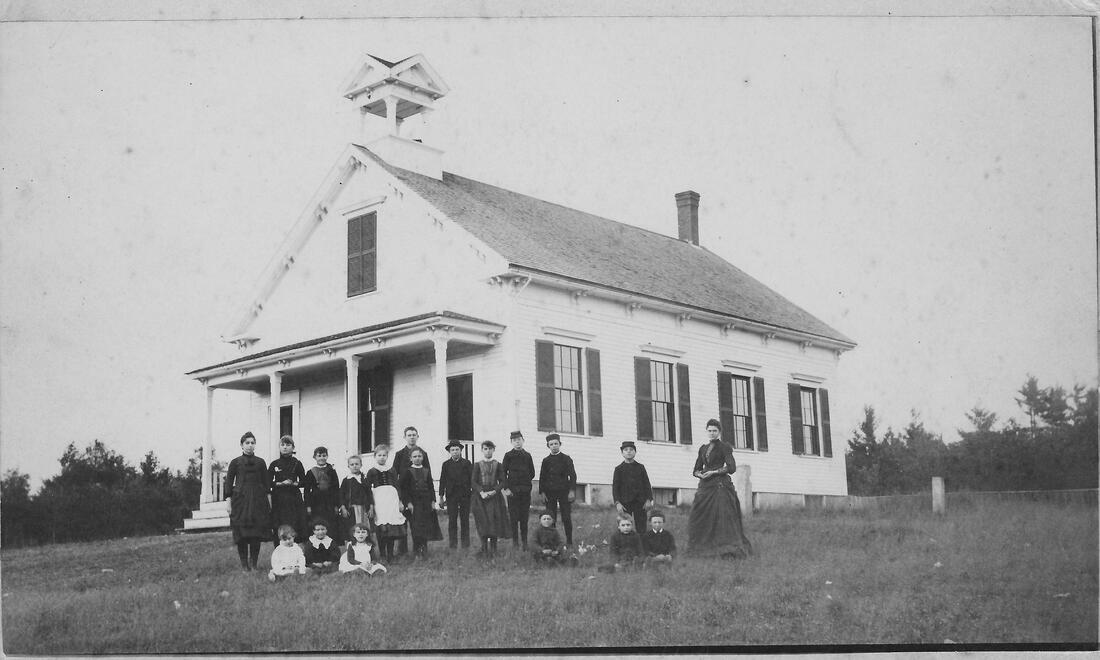

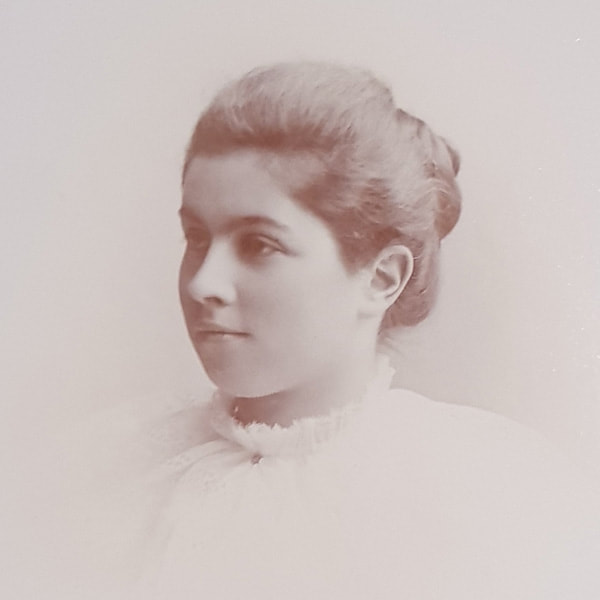
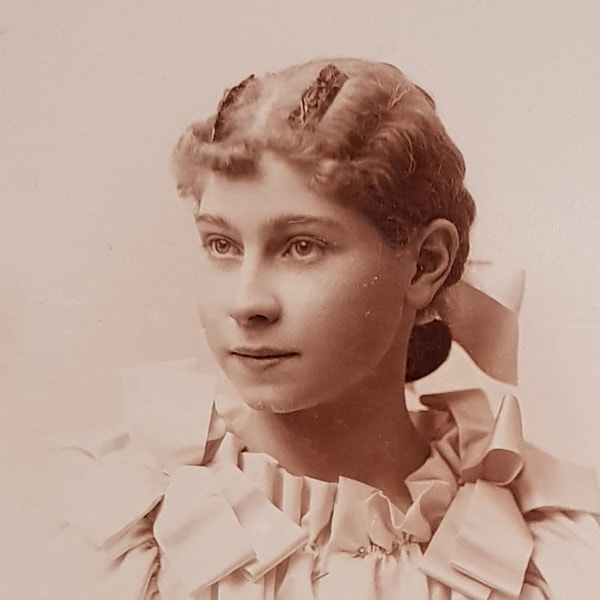
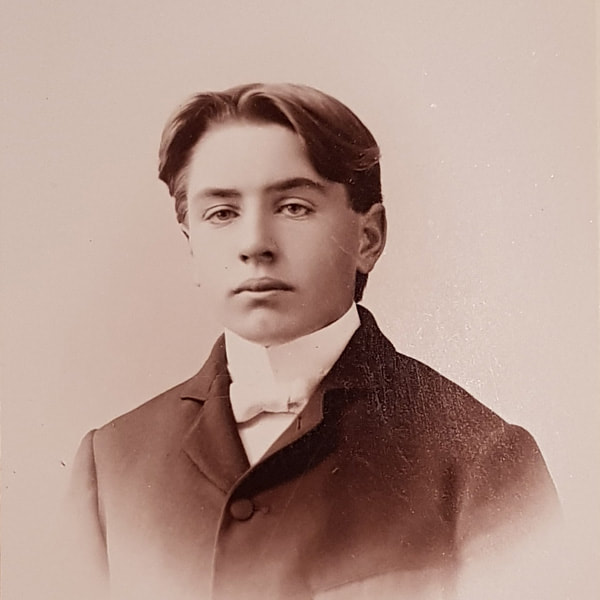
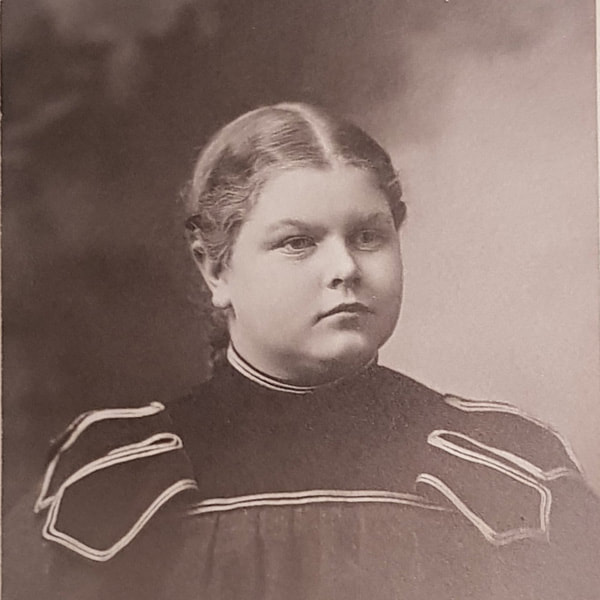
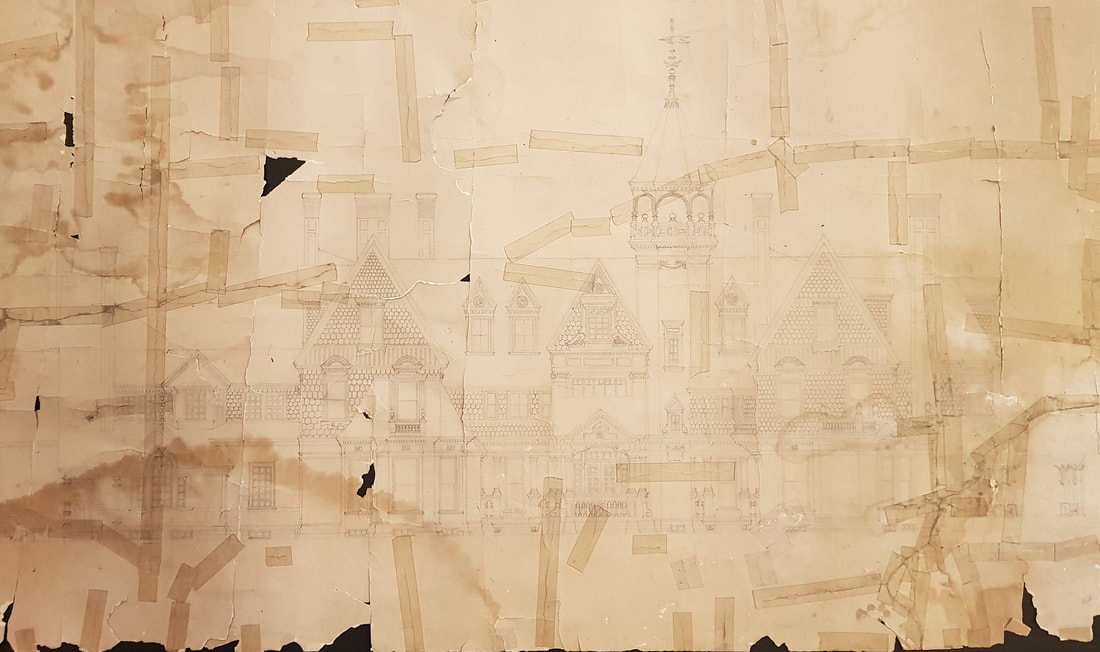
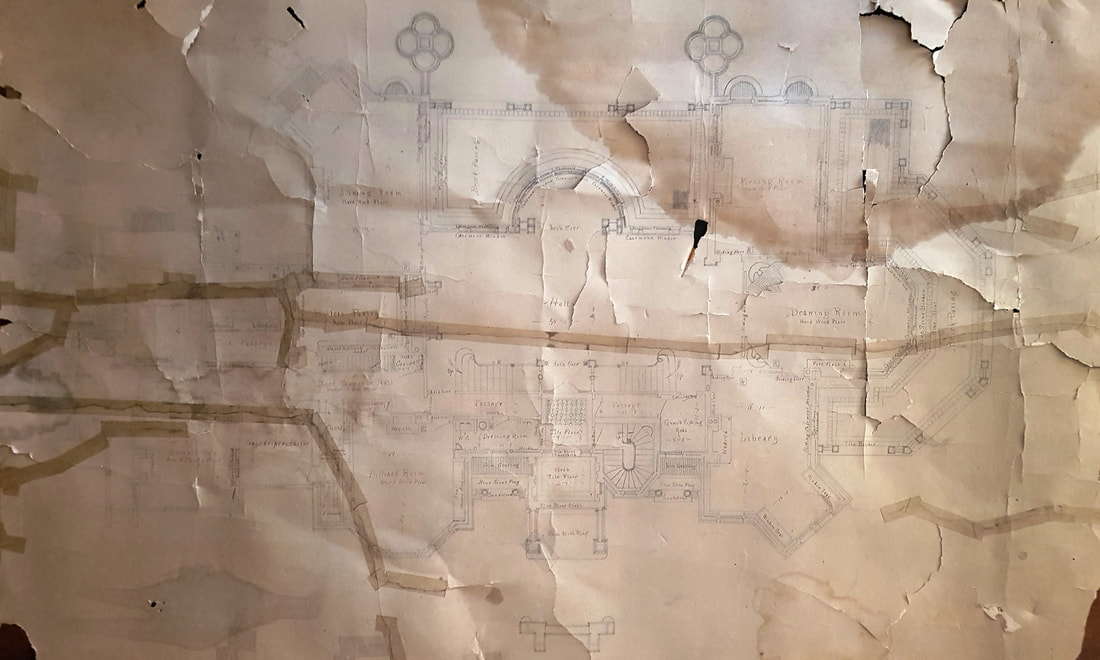
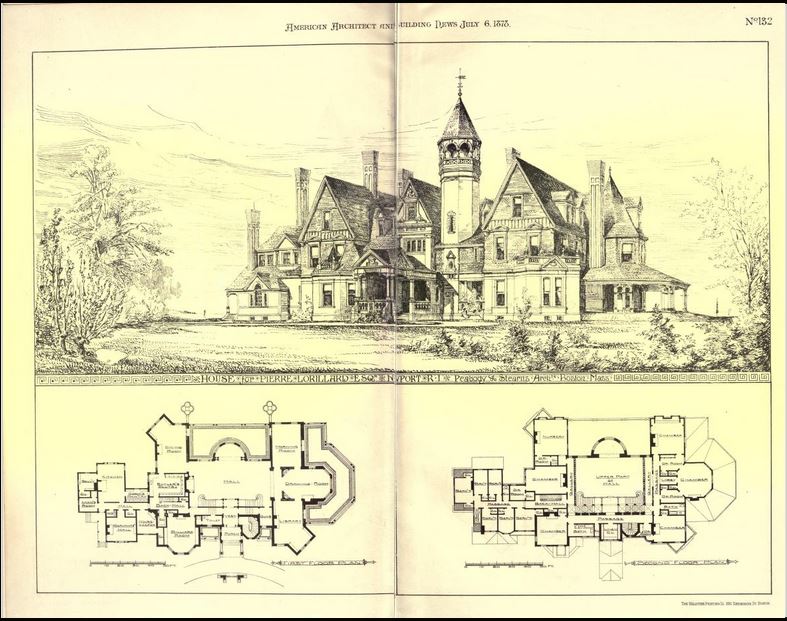
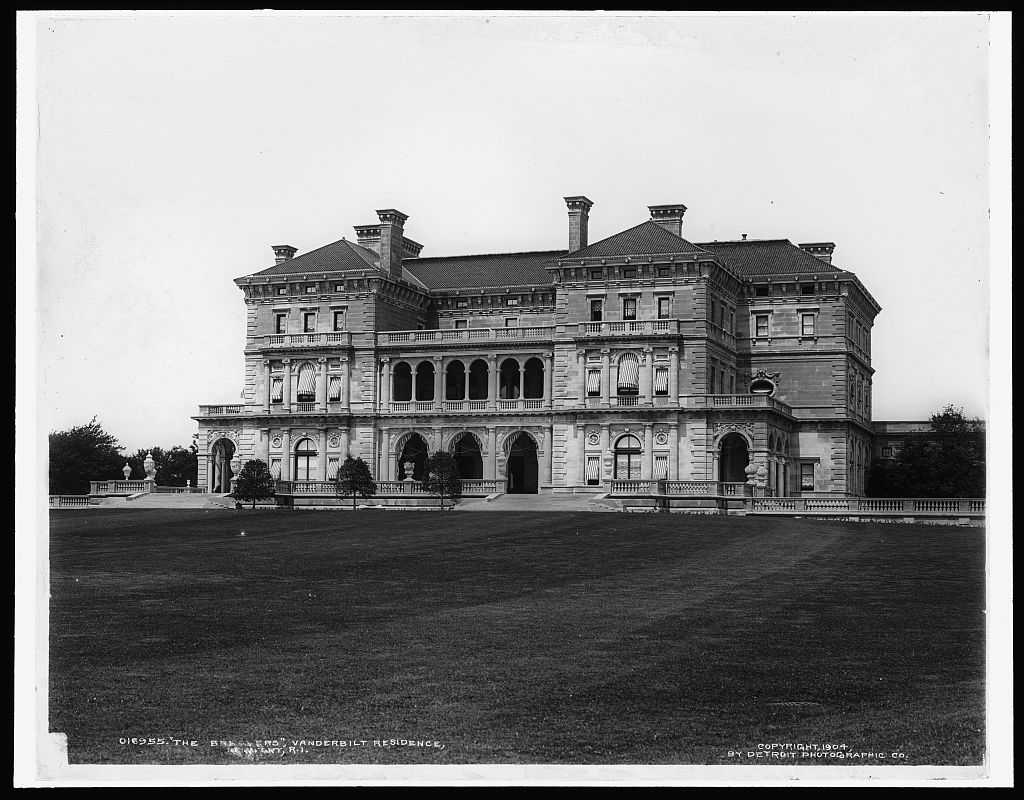
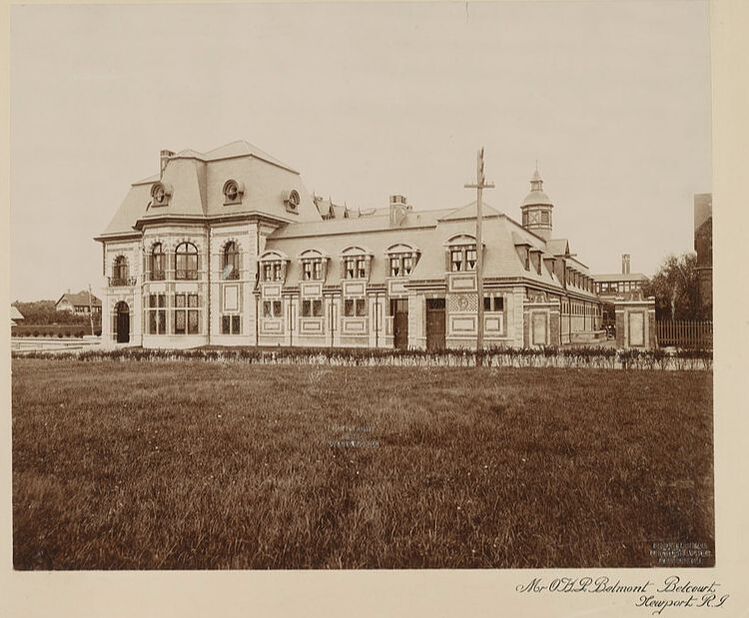
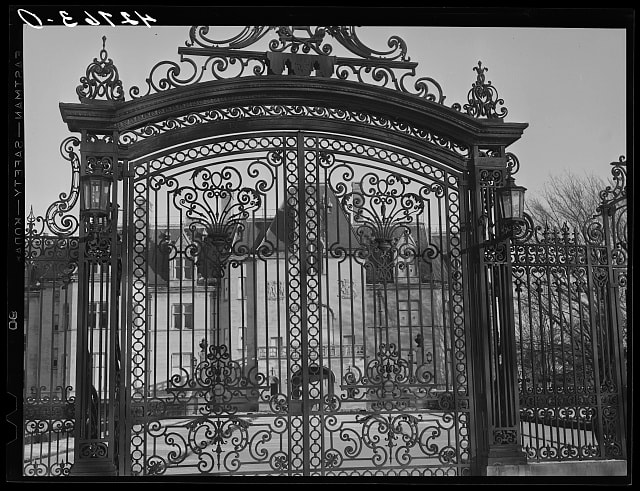
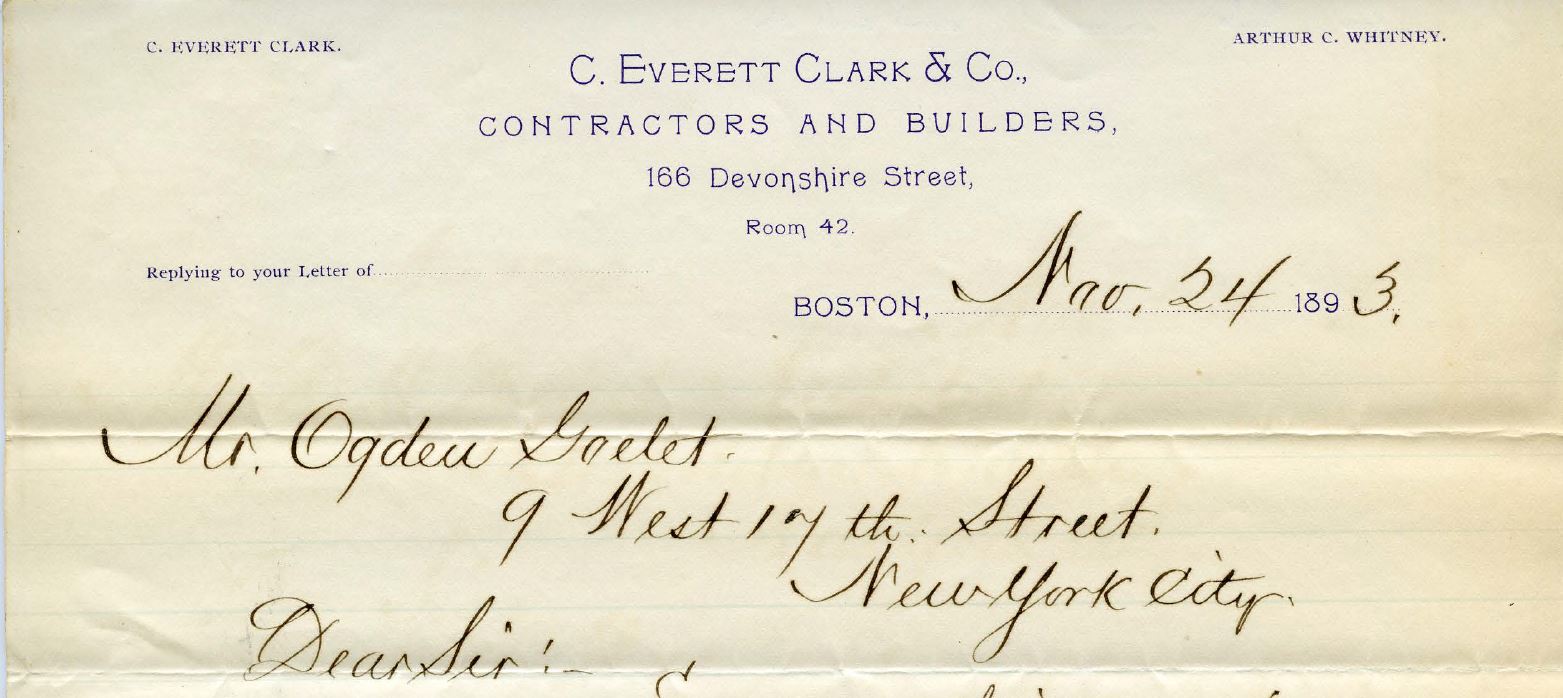
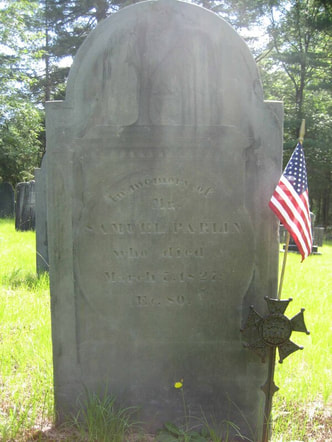
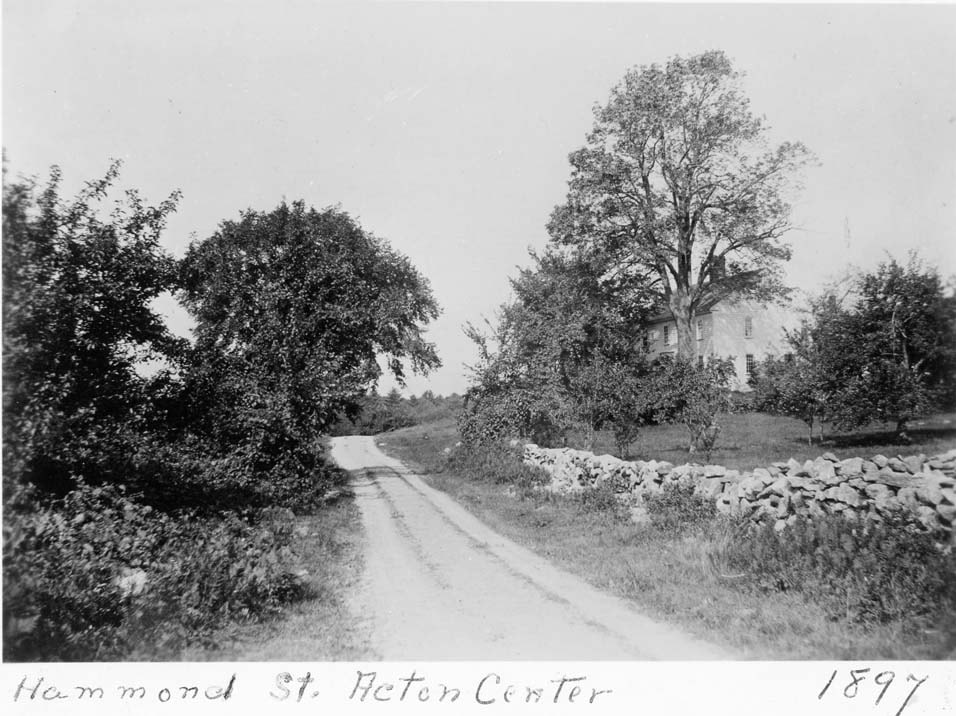
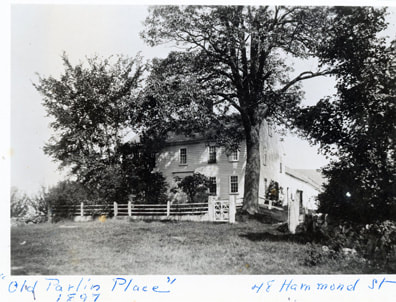
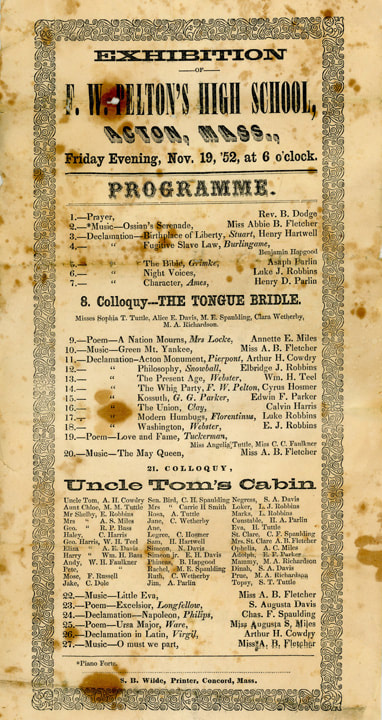

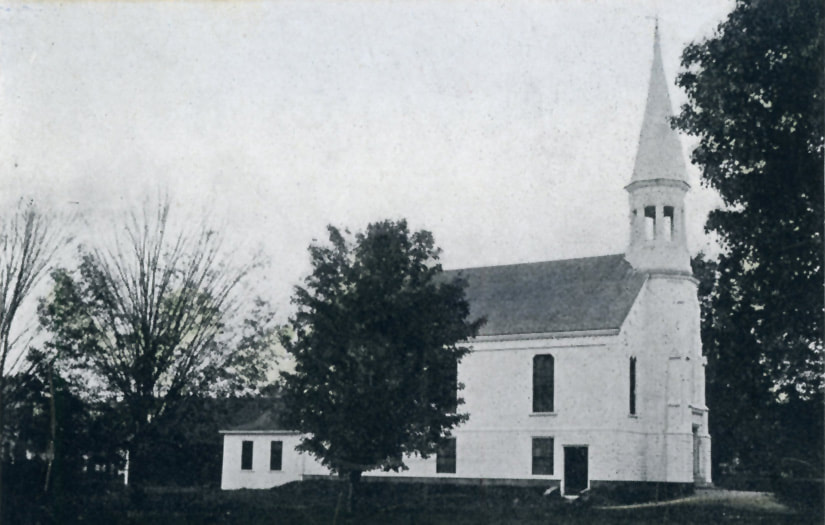
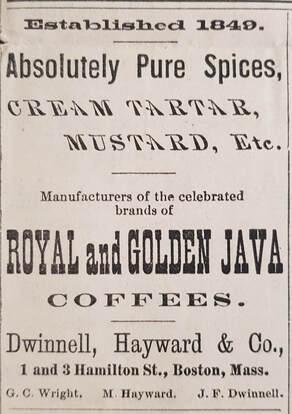
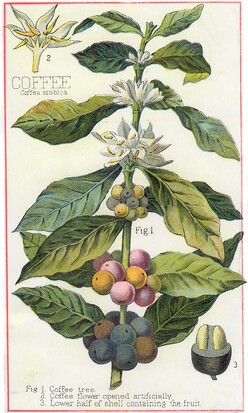
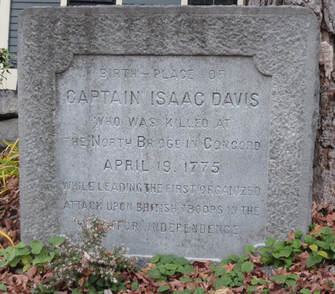
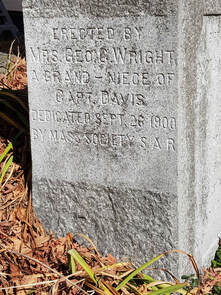
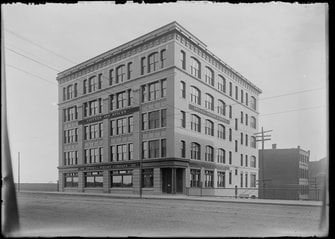
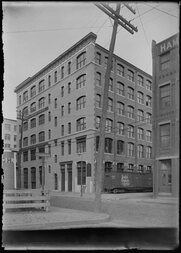
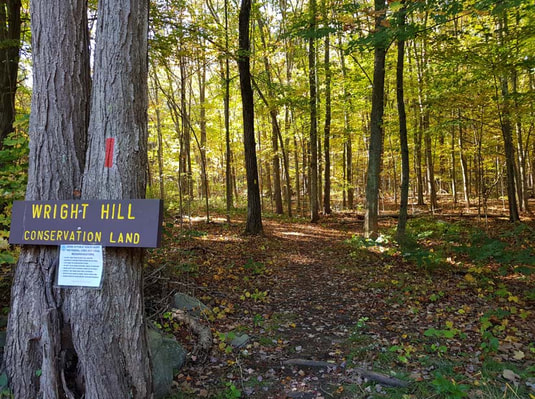
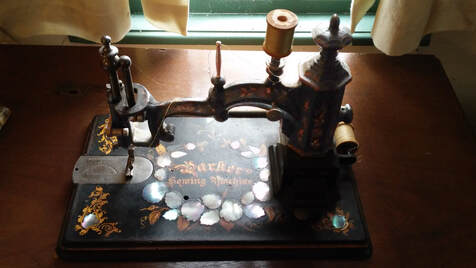
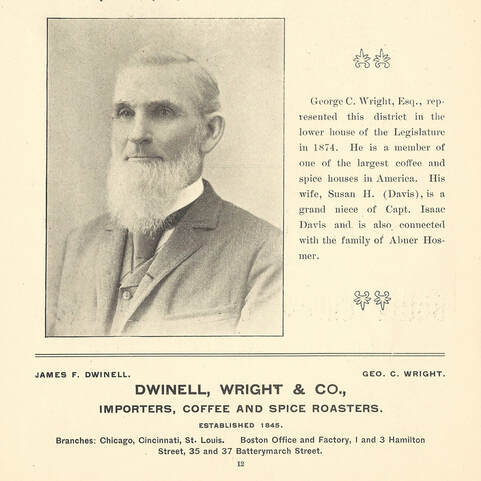
 RSS Feed
RSS Feed